History of the FESCO
1880 – 1935Dobroflot. Historical Milestones
“Dobroflot” was founded by the Government of Alexander III at the expense of citizens’ donations for development of the Russian marine trade. In 1879 s/s “Nizhny Novgorod” made first trial voyage from Odessa to Russia's Far East. Soon such voyages became regular, so the Russian government officially announced establishment of the shipping connection between the Black Sea and Far East ports of the country.
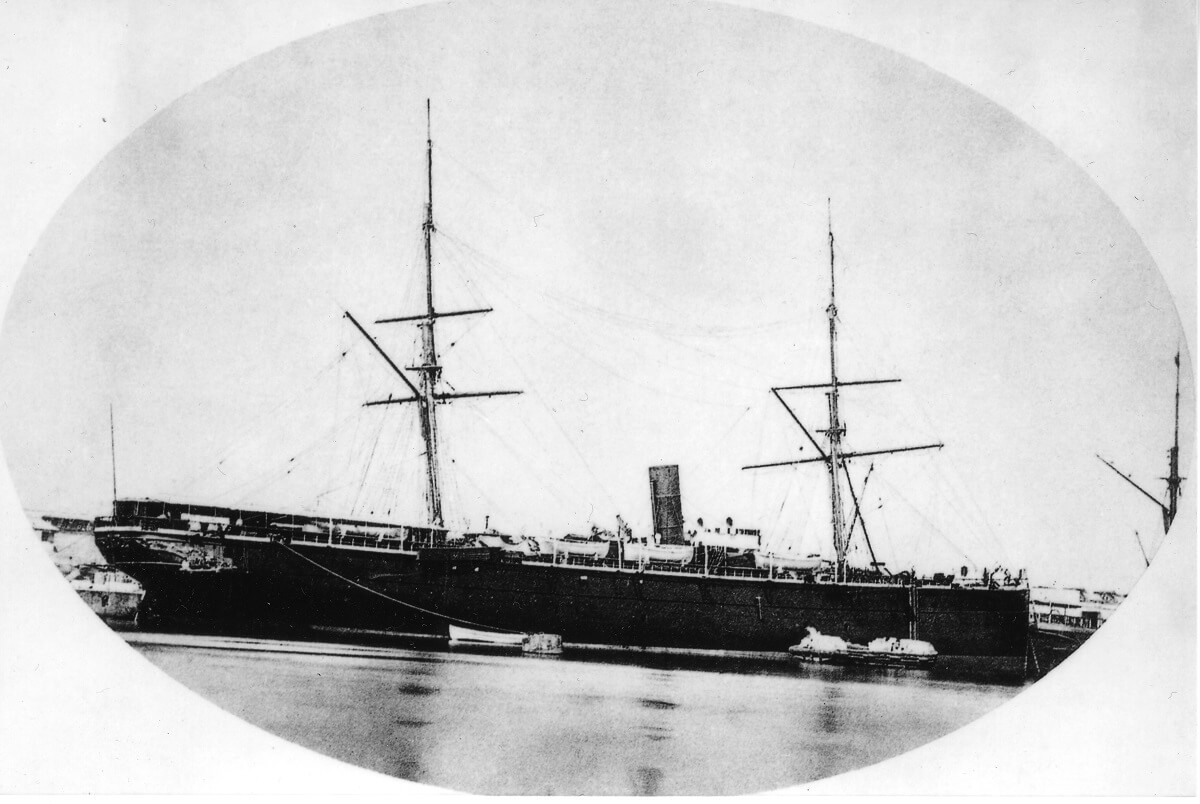 With its first voyage “Moskwa” delivered to Vladivostok 60,000 poods (982,841.23 kg) of cargo, food and industrial products and first two official passengers.
With its first voyage “Moskwa” delivered to Vladivostok 60,000 poods (982,841.23 kg) of cargo, food and industrial products and first two official passengers. The history of “Dobroflot” goes hand in hand with the history of the country.
Starting from 1883, “Dobroflot” steamships under agreement with the Russian Government began delivering migrants to Far East. Just over the first 10 years, apart from almost 40,000 passengers, more than 3,000 migrant families were brought.
Starting from 1891 “Dobroflot” was the main carrier of cargo for the Trans-Siberian Railway under construction. Its steamers delivered millions of tons of key commodities – rails, tie bars, special equipment and even girders for the bridge across Amur. During that time “Dobroflot” steamships carried to Vladivostok enormous volumes of construction materials, equipment and weapon for the Vladivostok Fortress.
In 1894 the Icebreaker “Silach3” arrived to Vladivostok. After that voyages between Odessa and Vladivostok became year-round.
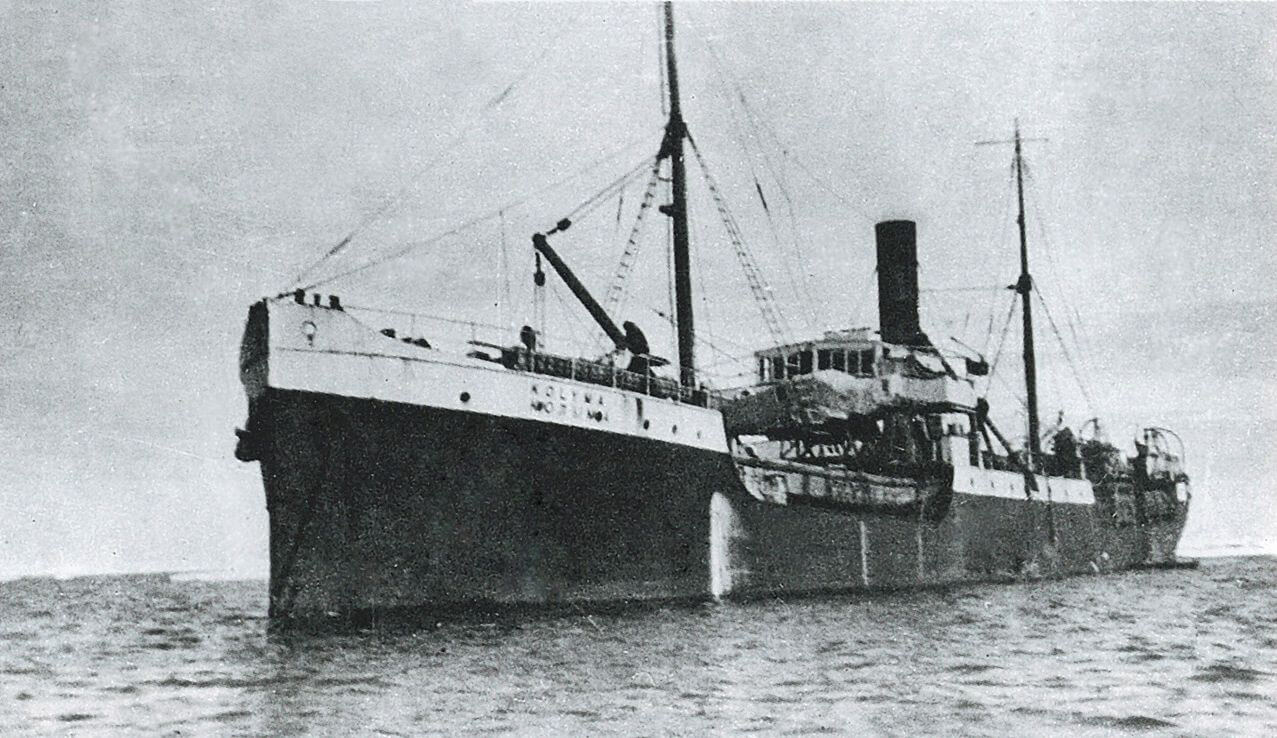 The voyage of s/s “Kolyma” laid the foundation for the shipping and transportation development of the Eastern Arctic.
The voyage of s/s “Kolyma” laid the foundation for the shipping and transportation development of the Eastern Arctic.1911 became momentous for the company: s/s the “Kolyma4” that under command of Petr Troyan5 departed from Vladivostok on the 1st of September reached the Kolyma estuary and delivered 40 tons of government cargo, two rowing-sailing boats and a steam boat. That voyage initiated the sea route to the Eastern Arctic.
During the Russo-Japanese war in 1904–1905 some steamships of the company were lost at the Dalny and Port-Artur ports. During the First World War (1914–1918) millions on tons of cargo were delivered to Far East. However if before the revolution the fleet of “Dobroflot” had comprised 44 vessels, by the end of the Civil War that was particularly long in Far East (1918–1922), the company’s fleet had been almost lost, many vessels under the command of the White movement members, were left at foreign ports.
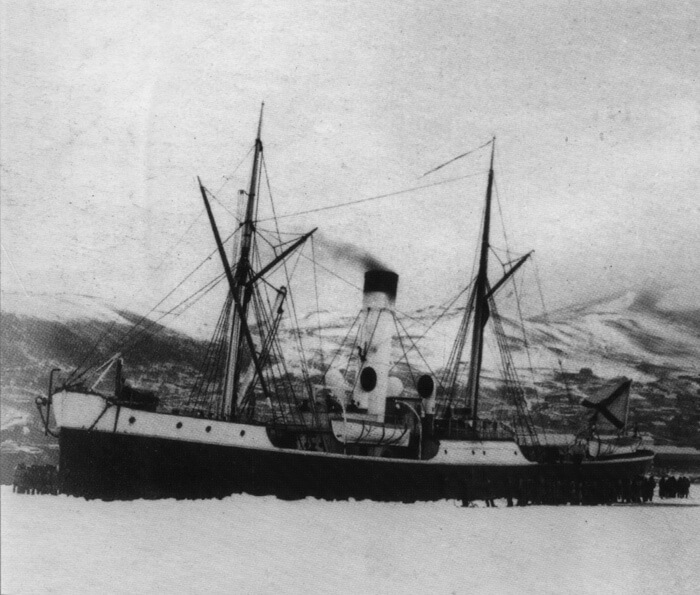 In 1897 “Silach” was brought for service to the unfrozen port of Port-Artur where it operated till 1905. It was sunk by Russian sailors on the day of the fortress capture.
In 1897 “Silach” was brought for service to the unfrozen port of Port-Artur where it operated till 1905. It was sunk by Russian sailors on the day of the fortress capture. 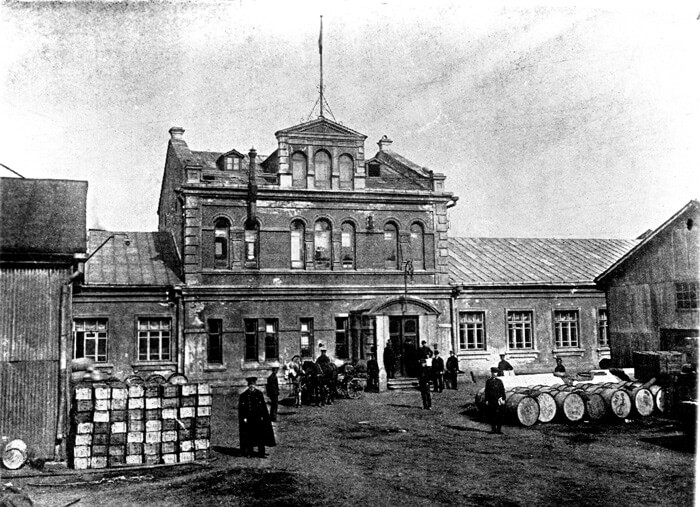 The administrative building of “Dobroflot” in Vladivostok, 1916.
The administrative building of “Dobroflot” in Vladivostok, 1916. The fleet was recovered gradually, at the same time the state searched for an efficient management model. In 1924 a uniform all-union association “Sovtorgflot” was set up, and the office of “Dobroflot” in Vladivostok became its division. In 1934 Vladivostok Arctic Shipping Company was created, and in 1935 Far Eastern Shipping Company, FESCO that became a globally renowned Soviet brand emerged.
1 “Moskwa” is a passenger-and-freight steamship. It was built in 1866 in England. It was in Dobroflot’s fleet from 1878 to 1882. This steamship was the first to make a regular voyage from Odessa to Vladivostok, thus setting regular passenger-and-freight traffic with Russian ports in the Pacific ocean. It was lost in the navigation accident in 1882 at the entry to the Red Sea.
2 Sergey Nikolaevich Chirikov was a direct descendent of Aleksey Chirikov, who accompanied Vitus Bering, one of the pioneers of Russian Alyaska. Before taking command of the steamship “Moskwa” he had serviced in Far East on ships of the Siberian fleet for several years.
3 “Silach” is a rescue tow boat, it was built in Getebort (Sweden) in 1890 b order of the Russian Government. In 1892–1893 it sailed from Kronstadt to Vladivostok. ”Silach” was the first vessel to break ice in the Golden Horn Bay. After the icebreaker “Nadezhny” specially built in Denmark had arrived to Vladivostok late in May 1897, "Silach” was transferred to the unfrozen port of Port-Artur. It was sunk by Russian sailors on the day of the fortress capture.
4 “Kolyma” is a commodity and passenger steamship built in Norway for AS Produce. The Russian government bought it in 1911. It was included into Dobroflot under the name Kolyma. From 1911 to 1919 it made voyages to Kamchatka, Sakhalin, Kolyma, Nikolayevsk-on-Amur.
5 Petr Arkadievich Troyan (1856–1922) was a Russian sailor, explorer, rear admiral, participant of the Russo-Japan war of 1904–1905. He serviced on ships of the Siberian and Aral fleet, Dobroflot. He carried out hydrographical studies in Far East. In 1911 on the steamship “Kolyma” he went to the first sea expedition to the Kolyma estuary where one of the bays is named after him.
1936 – 1969In Fire and Peace
Before the outbreak of the Great Patriotic War the company’s fleet had consisted of 85 vessels, that were operated practically all over the world. The war made its corrections, the main task was to deliver cargo under landlease to the USA – almost a half of the total volume of the required and vital cargo delivered from the USSR as a part of the military aid was carried by FESCO vessels across the Pacific Ocean and the port of Vladivostok.
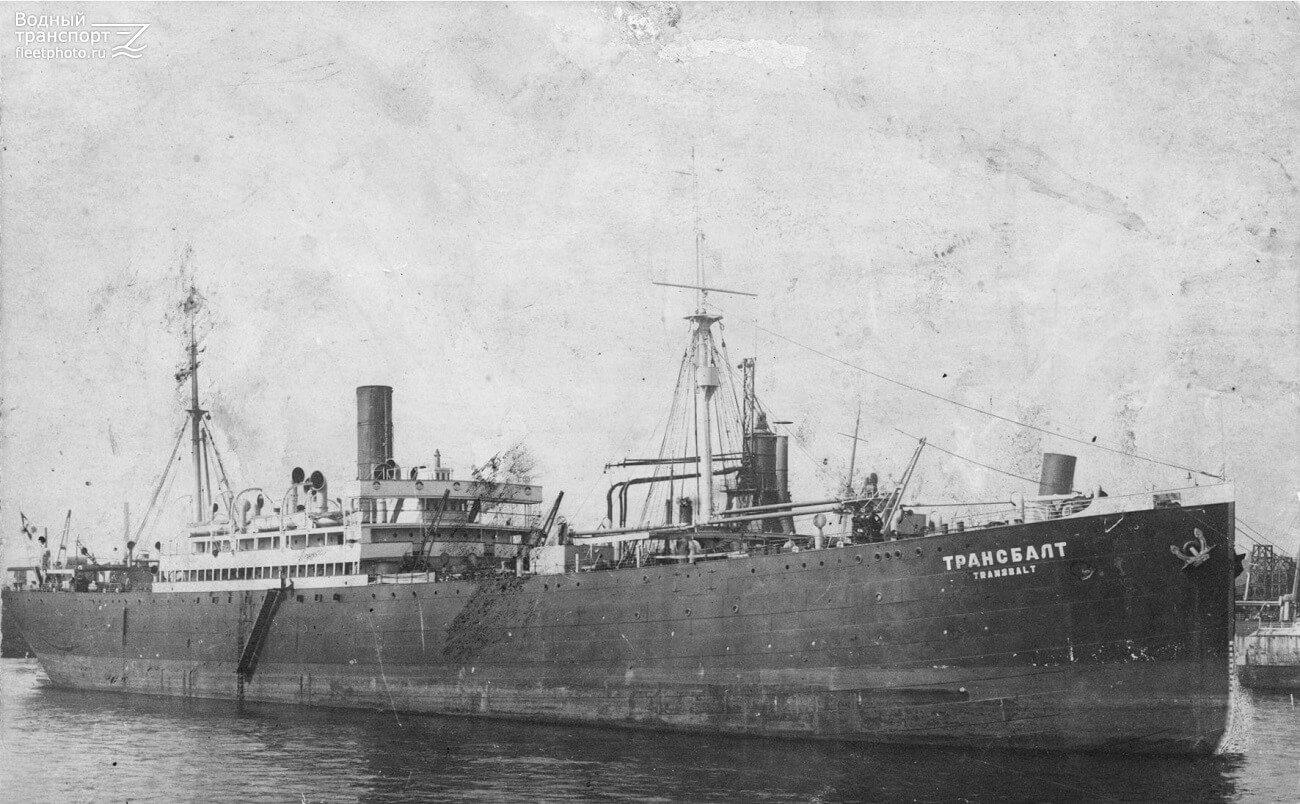 S/s “Transbalt” was one of the largest transport vessels in the USSR, carried landlease cargo from the USA to Vladivostok, was the last vessel of FESCO lost during the Second World War.
S/s “Transbalt” was one of the largest transport vessels in the USSR, carried landlease cargo from the USA to Vladivostok, was the last vessel of FESCO lost during the Second World War.The price was high: 24 steamers1 did not come back to their home port, over 400 sailors died. Today there are outlines of all lost vessels on the memorial stones near the monument of the trade fleet sailors in the center of Vladivostok, the sailors’ surnames are cast in metal.
.jpg) The monument of the trade fleet sailors who died during the Second Patriotic War was installed in Vladivostok in November 1967. There is a statuary of three dying sailors on a pedestal in the center of the square. There are 24 boards to the right and to the left of it, each board is dedicated to one lost vessel.
The monument of the trade fleet sailors who died during the Second Patriotic War was installed in Vladivostok in November 1967. There is a statuary of three dying sailors on a pedestal in the center of the square. There are 24 boards to the right and to the left of it, each board is dedicated to one lost vessel.
The company’s fleet was renovated after the war: the steamships were replaced with motor ships and diesel-electric ships built at the domestic shipyards and foreign wharves. Foreign shipping lines that forthwith occupied the market were set up: in 1958 – Japan-Nakhodka Line, in 1967 – FESCO Indian Line2, in 1971 and 1972 - FESCO Pacific South and FESCO Pасific North
During that time the company’s history was closely tied with the dramatic events of the global history of the second half of the 20th century. In Autumn 1962 immediately before the Caribbean crisis, the FESCO steamships took active part in carriage of Soviet rockets and military servicemen to Cuba, and in the middle of the 1960s and till the end of the war, FESCO vessels in Vietnam transported considerable amounts of cargo to Vietnam fighting with the USA.
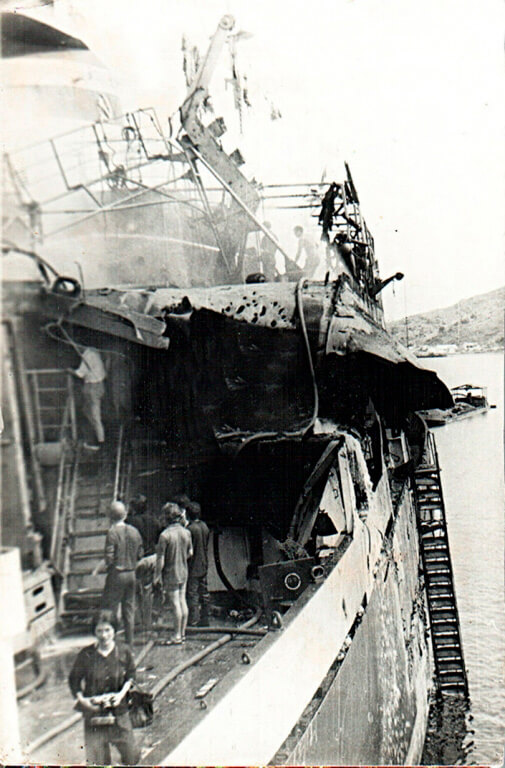
The crew of the steamship “Grisha Akopyan” is inspecting damages of the vessel after bombing by the US aviation. Vietnam, Kamfa port, May 10, 1972.
______________________________________
- Passenger-and-freight steamship “Krechet” (December 1941, Hong Kong).
- Freight steamship “Perekop” (December 1941, South China Sea).
- Steamer tanker “Maikop” (December 1941, south-western part of the Pacific ocean).
- Freight steamship “Kolkhoznik” (January 1942, Atlantic ocean, shores of Nova Scotia).
- Freight steamship “Ashkhabad” (April 1942, Florida Bay).
- Freight steamship “Kiev” (April 1942, Northern Norway).
- Freight steamship “Angarstroy” (May 1942, Pacific Ocean).
- Passenger-and-freight steamship “Stalingrad” (September 1942, Barents Sea).
- Freight steamship “Mikoyan” (October 1942, Indian Ocean).
- Steamer tanker “Donbass” (November 1942, Barents Sea).
- Steamer tanker “Dekabrist” (November 1942, Barents Sea).
- Timber steamship “Kuznets Lesov” (December 1942, Barents Sea).
- Passenger-and-freight steamship “Simferopol” (December 1942, Hong Kong).
- Freight steamship “Krasny partisan” (January 1943, Barents Sea).
- Freight steamship “Ilmen” (February 1943, East China Sea).
- Freight steamship “Kola” (February 1943, Tsushima Strait).
- Freight steamship “Tbilisi” (September 1943, Yenisei estuary).
- Freight steamship “Arkhangelsk” (September 1943, Kara Sea).
- Freight steamship “Sergey Kirov” (October 1943, Kara Sea).
- Timber steamship “Belorussiya” (March 1944, Sea of Okhotsk).
- Freight steamship “Pavlin Vinogradov” (April 1944, Pacific Ocean).
- Freight steamship “Ob” (July 1944, Western Kamchatka).
- Passenger-and-freight steamship refrigerator “Transbalt” (June 1945, Sea of Japan)
2 On September 15, 1967 the All-union association “Sovfracht” and FESCO opened the first international regular shipping line via Soviet Far East, South-East Asia and India. It was important to stress the unique nature of the new line, to create a special brand for it that would be recognized all over the world. So the international logo FESCO (Far Eastern Shipping Company) and the line name - FESCO Indian Line were created.
1970 – 1991Soviet Leader in the Asia-Pacific Region
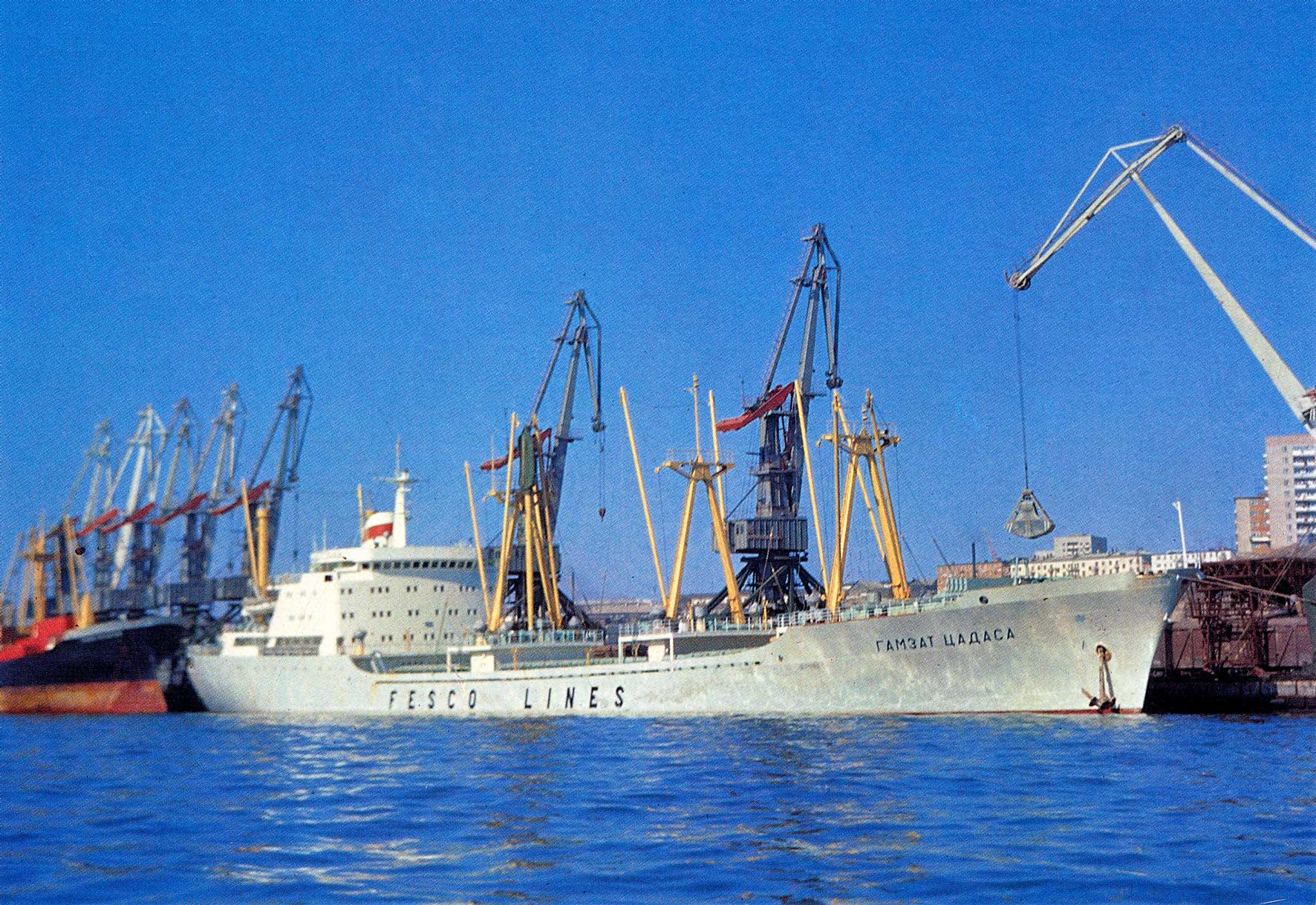
FESCO actively operated in the regular carriage market of the APR. Then the marine transport of the USSR was one of the main foreign exchange sources for the state, and FESCO led by volume of carriages of cargo of foreign freighters and net foreign exchange revenue. That was due to the practically annual commissioning of new regular lines with a declared schedule. At that time the largest part of the FESCO’s container fleet was used for international linear carriages. During the period from 1974 to 1983 FESCO opened four new regular international lines expanding the geography of carriages to 200 ports in more than 50 countries all over the world.
Marine passenger carriages effected by 15 vessels were an important part of the FESCO’s operations. In the 70s and 80s there were seven express lines between Vladivostok and Far Eastern ports that connected Primorye with Kamchatka, Sakhalin, Kurils and Magadan. Besides, FESCO vessels serviced such international lines as Nakhodka – Iokogama, Nakhodka – Hong Kong, and made voyages to Singapore, Australia, Thailand and other countries.
At the same time the increasing activity in the notional “south” in the area of the liner shipping did not release the company’s liability for supporting deliveries to the Northern territory. Annually up to 50 FESCO ships delivered cargo to Chukotka and to the Eastern Arctic.
.jpg)
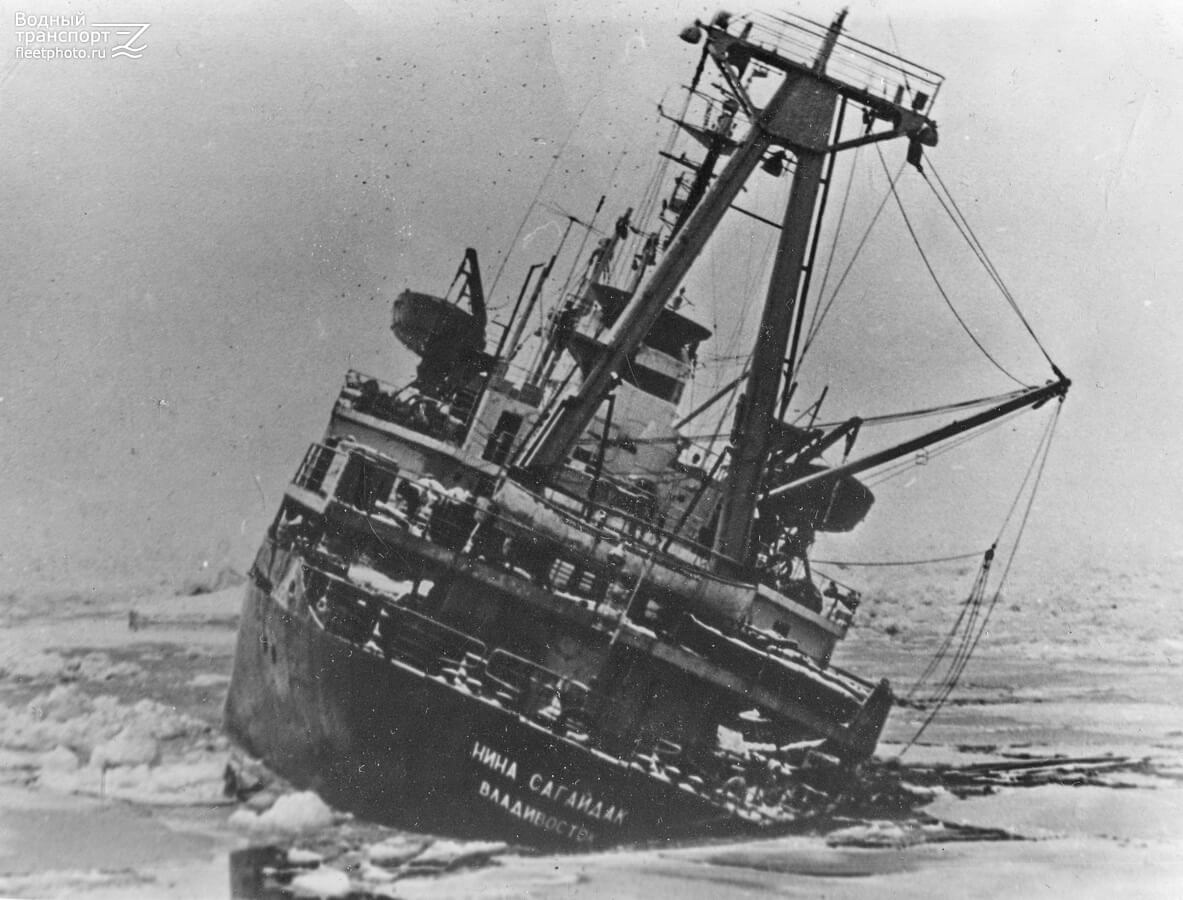 S/s “Nina Sagaidak” lost in ice during the sever navigation in 1983.
S/s “Nina Sagaidak” lost in ice during the sever navigation in 1983.To prevent situations like this, a number of more powerful transport icebreakers of CA-15 class of the “Norilsk” type able to operate in the Arctic conditions all year round were included into the company’s fleet.
In the 1980s FESCO’s fleet was further expanded. Four passenger ships
“Lyubov Orlova”1 and two car and passenger ferries “Dmitry Shostakovich” were included into the fleet one after another.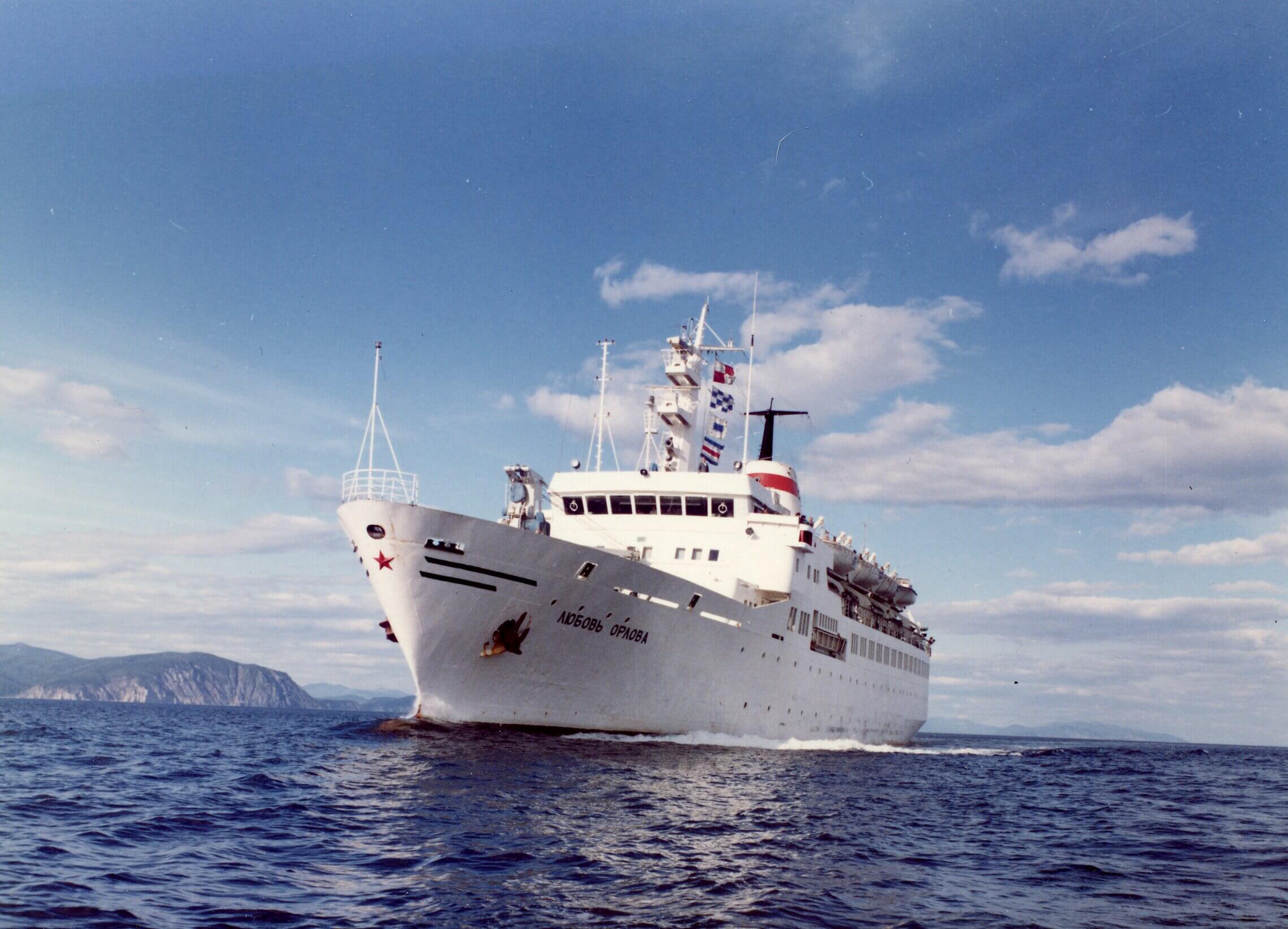 In the 1980s FESCO was active in the passenger carriages segment as well. “Lyubov Orlova” is a double-deck cruiser belonging to the “Maria Ermolova” class.
In the 1980s FESCO was active in the passenger carriages segment as well. “Lyubov Orlova” is a double-deck cruiser belonging to the “Maria Ermolova” class.
In early 1990s together with the USSR FESCO experienced some economic reforms. On February 15, 1991 the state unitary enterprise “FESCO” (SE “FESCO”) was registered. On September 23, 1992 the FESCO Employees’ Conference registered change of the legal form from the unitary enterprise to the joint-stock company.
______________________________________
1 “Lyubov Orlova” is a doublt-deck cruiser belonging to the “Maria Ermolova” class. It was built by the Soviet order at the wharf Titovo Brodogradiliste in Kraljevica (Yugoslavia) in 1976. The vessel was named after the Soviet actress, people’s artist of the USSR Lyubov Orlova. It was in the FESCO fleet till 1999.
1992 – 2008The era of changes
In the 1990s FESCO actively expanded the geography of its shipping lines, created its own network of agencies abroad – in Australia, New Zealand, Hong Kong, USA, Canada. Those agencies allowed the company to control the foreign container carriage market and create its own client base.

In the market economy without any state support, the company kept on modernizing its fleet. For this purpose from 1992 to 2002 it purchased 13 vessels, and from 2002 to 2012 another 26: container carriers, bulkers, Ro-Ro vessels1 and one specialized supply vessel.
Gradually container carriage became one of the main lines of business. In 1999 FESCO launched marine carriage of perishable goods in its own refrigerator containers on coastal lines. In 2002 “Industrial Investors” Group bought out the majority interest in FESCO. Then transfer to the integrated logistics began.
In 2003 FESCO Logistic was incorporated in Moscow to expand FESCO container transportations in the Western Russia. At the same time a railway operator “Dalreftrans” purchased in 2003 launched carriages of refrigerator containers between Vladivostok and Moscow on fitting platforms. In 2004 FESCO and JSC Russian Railways set up a joint company for transportation of containers along the Trans-Siberian Railway – “Russkaya troika”. FESCO OJSC became a basic company of the FESCO Transport Group.
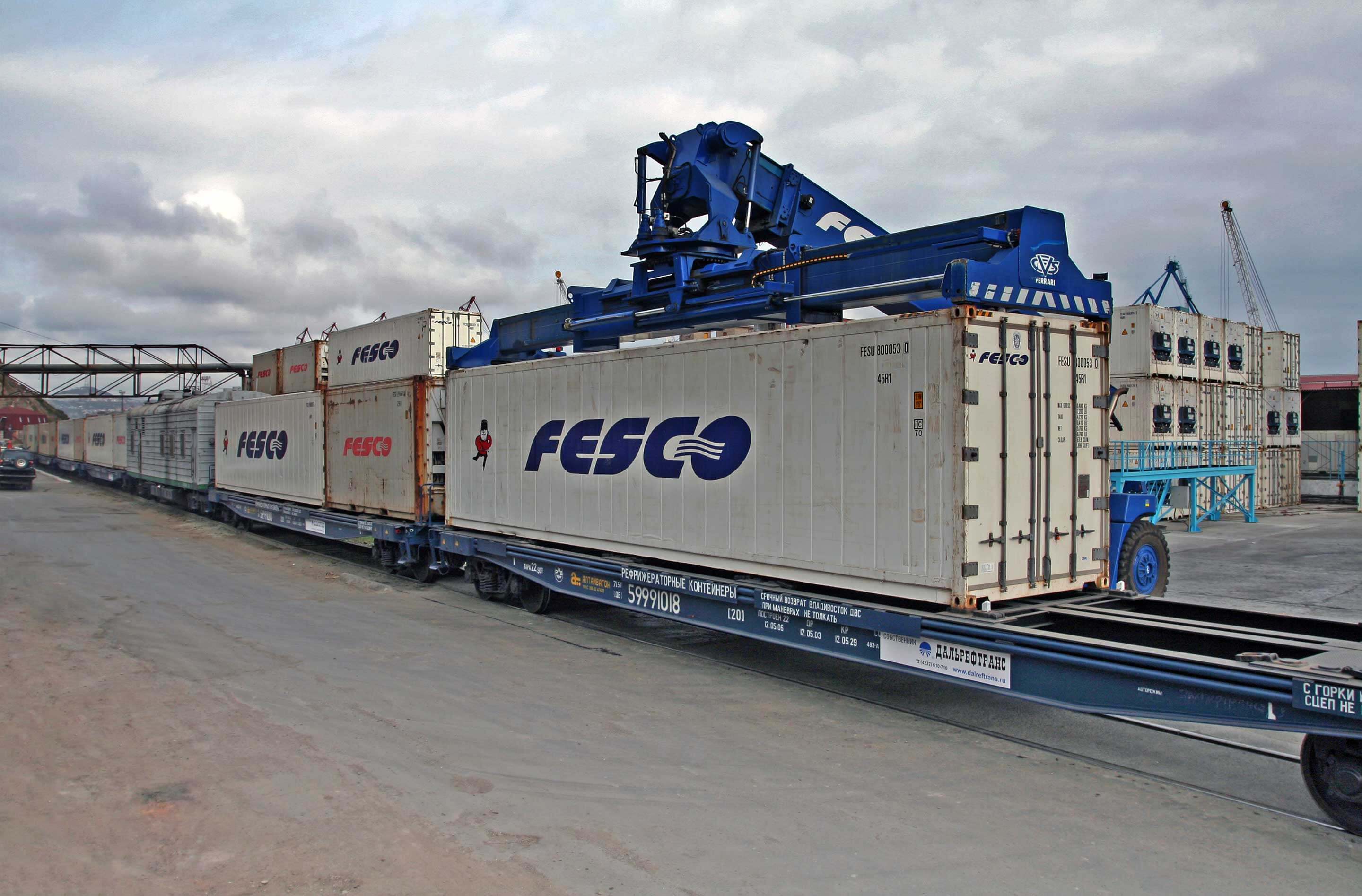
In 2006 “Transgarant”, one of the major rolling stock operators in Russia, joined the Group (the transaction was closed in 2007). By that time the size of the rolling stock was record – over 14,000 railcars.
A year later FESCO became the owner of LLC “M-Port” controlling 95.2% of shares of the Commercial Port of Vladivostok, and in 2008 FESCO purchased 50% of the Vladivostok Container Terminal. Later the assets were united under a single brand of the Commercial Port of Vladivostok.
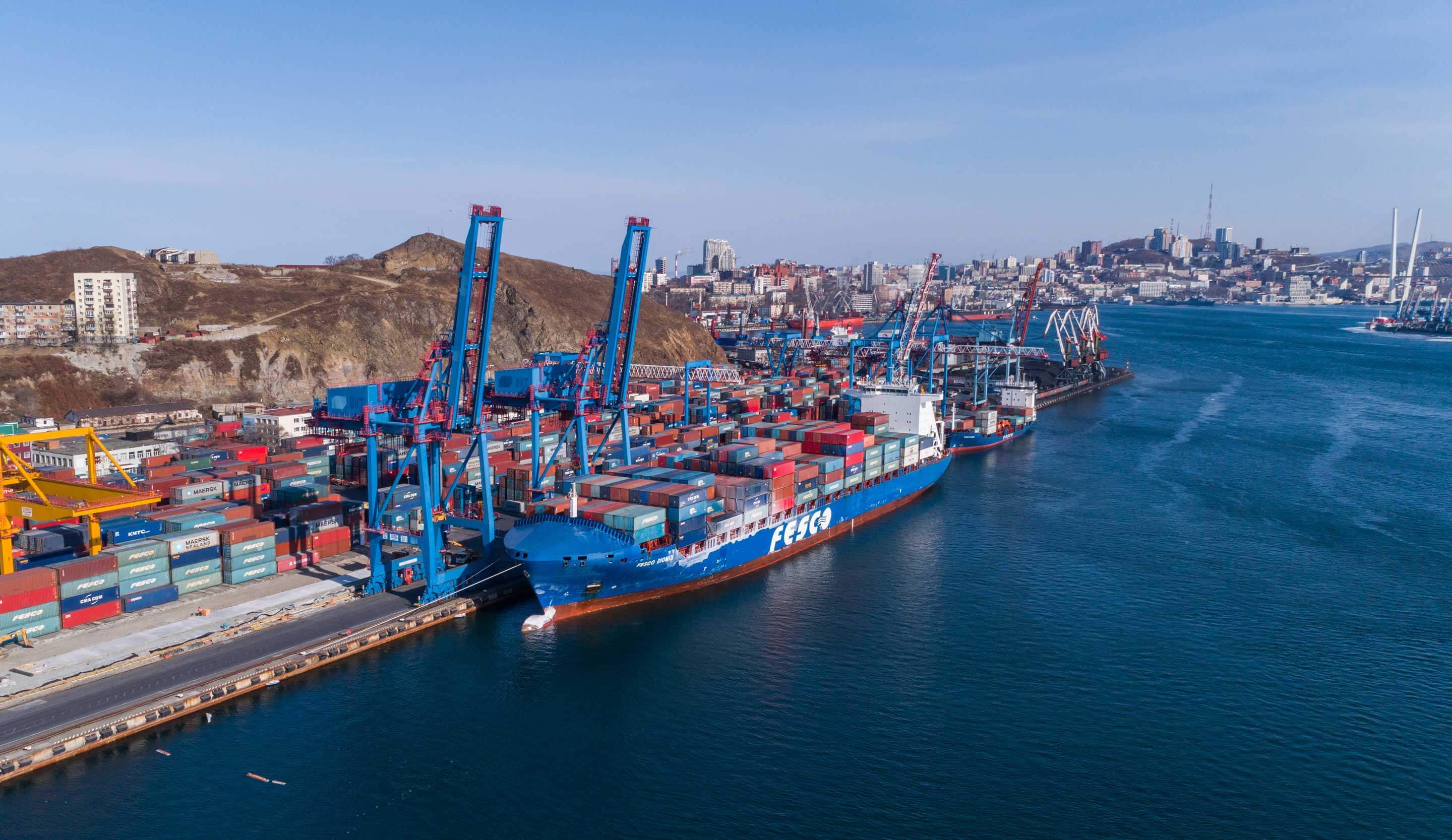
Using the unique experience of work under server ice conditions, FESCO provided icebreaking support and effected cargo supplies for oil off-shore platforms of Sakhalin by order of Exxon Neftegaz Ltd. delivering cargo under social projects within the framework of supplies to the Northern territories.
______________________________________
1 Ro-Ro ship or roll-on-roll-off ship is a vessel for carrying wheel-based cargo (cars, freight transport, railcars). The principle difference of this ship is horizontal loading and unloading via a fold-out head or aft.
2008 – 2019Integrated logistics
.jpg) Container train on the territory of Commercial Port of Vladivostok, 2020
Container train on the territory of Commercial Port of Vladivostok, 2020Today, FIT provides its customers with intermodal container transportation services and related services based on own assets of FESCO.
In 2008, FESCO switched to asset management by types of business. Through development of line logistics services FESCO established a single operator - FESCO Integrated Transport (FIT) which in 2011 was transformed into an integrator managing all types of businesses and assets of the Group involved in provision of various types of container services. The new structure ensured consolidation and vertical integration of container business management in a single center. Today, FIT is the key company of the Group providing its customers with intermodal container transportations and related services based on own assets of FESCO.
In 2012, as part of strategy for priority development of intermodal operations, FESCO implemented a fleet optimization program stipulating sale of part of tonnage not involved in own services. The goal of such transformation was to turn the shipping business of FESCO into the core of the line logistics division with a modern fleet consisting primarily of container ships and general-purpose vessels.
In 2012, via a series of transactions the Summa Group and the TPG fund indirectly acquired a total of 49.99% of shares of FAR-EASTERN SHIPPING COMPANY PLC.; GHP independently joined the acquisition transactions. As a result, the investors received an indirect economic interest in the FESCO Group in the amount of 32.5%, 17.4% and 23.75%, respectively.
.jpg) FESCO Diomid motor vessel enters port of Vladivostok, 2018
FESCO Diomid motor vessel enters port of Vladivostok, 2018In 2016, FESCO began optimization of its railway assets, which was fully completed in 2019. Since then, the fleet of the Group has consisted entirely of specialized rolling stock - fitting platforms and covered rail cars. FESCO also consolidated a stake in the fitting platform operator Russkaya Troyka, becoming the sole owner of the company.
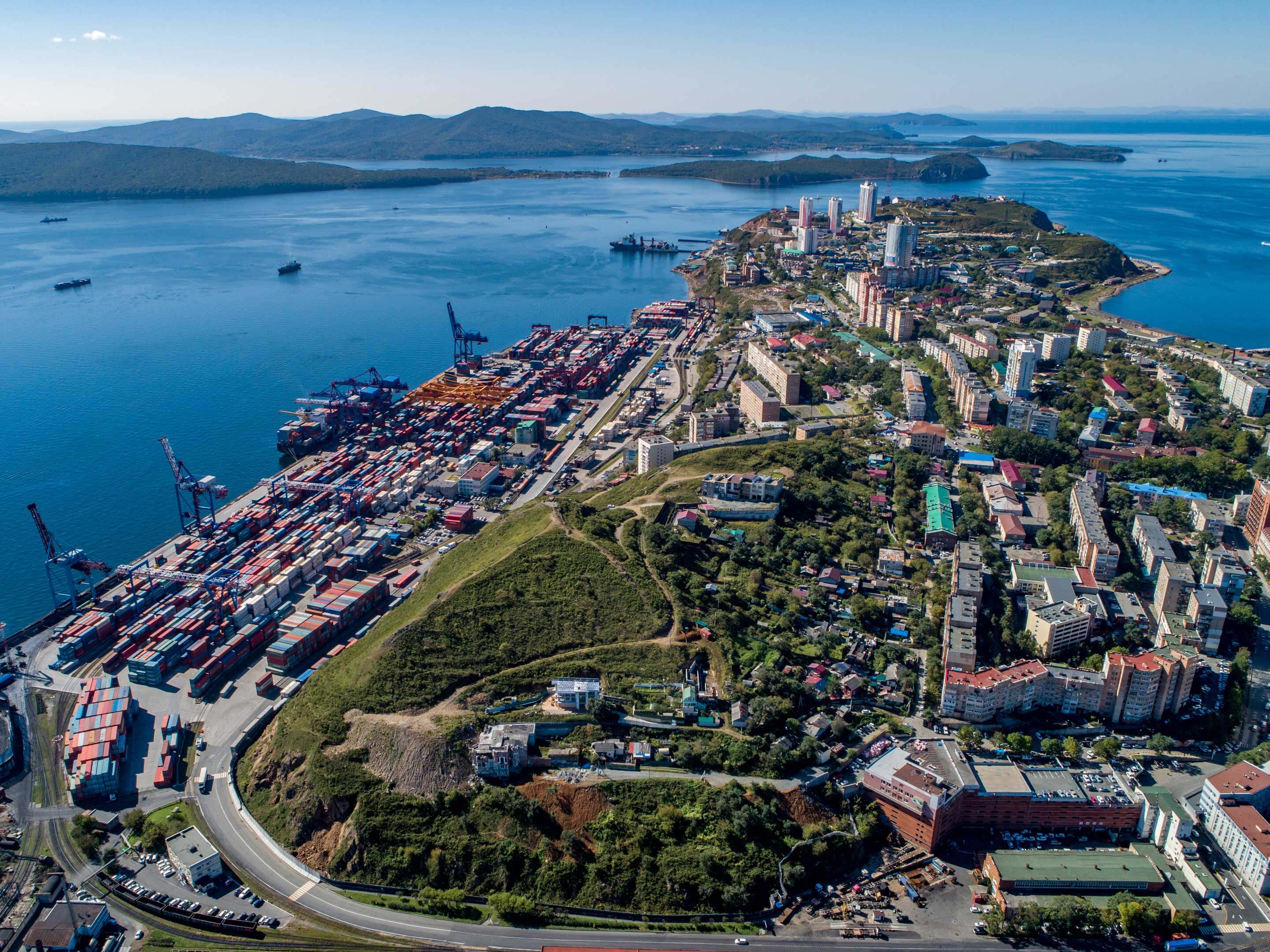 In the first half of 2019, Commercial Port of Vladivostok handled 5.6 million tons of various types of cargo, a historical record for the enterprise.
In the first half of 2019, Commercial Port of Vladivostok handled 5.6 million tons of various types of cargo, a historical record for the enterprise.Since 2017, FESCO has begun to actively develop the project logistics segment, primarily for large construction and infrastructure projects. During this period, the Group focused on development of intermodal transportations, expansion of geography of rail and sea domestic and international services. In addition, FESCO began to expand its own competencies in integrated 3PL logistics and door-to-door transportations.
2020 – 2023
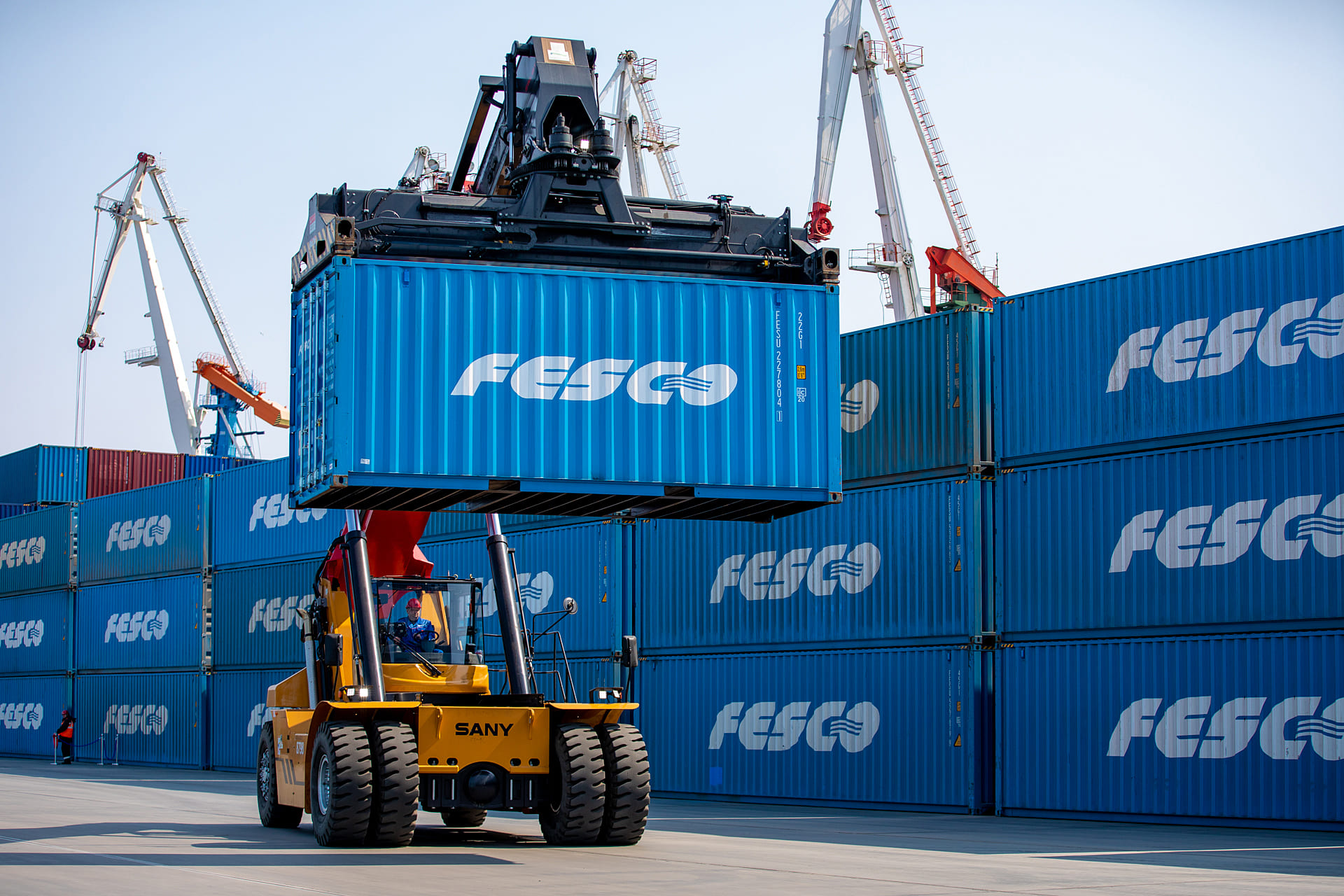
Due to reorientation of Russian foreign trade from the West to the East, FESCO has the opportunity to organize logistics services in new directions, as well as to return to those routes which it was forced to abandon twenty to thirty years ago.
FESCO has launched logistics services in countries of Southeast Asia and India, has significantly expanded the geography of work with China. At the same time, most operations of the Group remain concentrated in the Far East, which allows to receive additional benefits from the dynamic development of bilateral trade between Russia and countries of Asia.
During this period, FESCO begins to closely cooperate in the field of project logistics with State Corporation Rosatom. At the same time, the Group began to actively invest in expanding its assets - increasing the number of dry and refrigerated containers, expanding the fleet of fitting platforms, significantly updating its own vessel fleet and developing the terminal network.
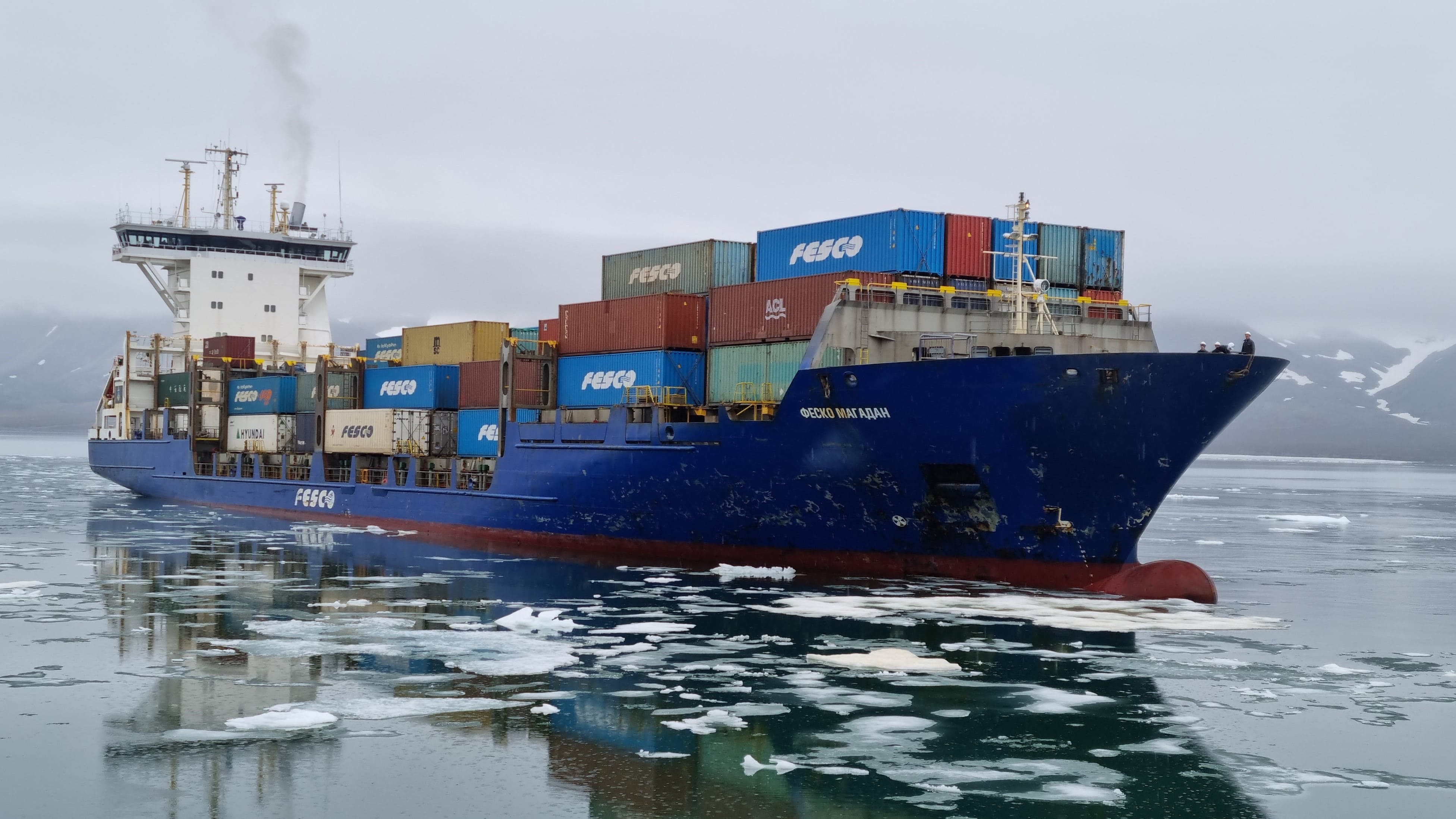
In 2020, FESCO launched regular container trains for accelerated delivery of cars from China, and by the end of 2020 Commercial Port of Vladivostok (CPV) took the first place in container throughput in Russia for the first time in its history.
In the same year FESCO began to pay more attention to corporate social responsibility. The Group organized a grant competition named Sea of Opportunities to solve acute social problems of Primorye, and FESCO began long-term cooperation with Charitable Foundation Rusfond to help seriously ill children in Primorye.
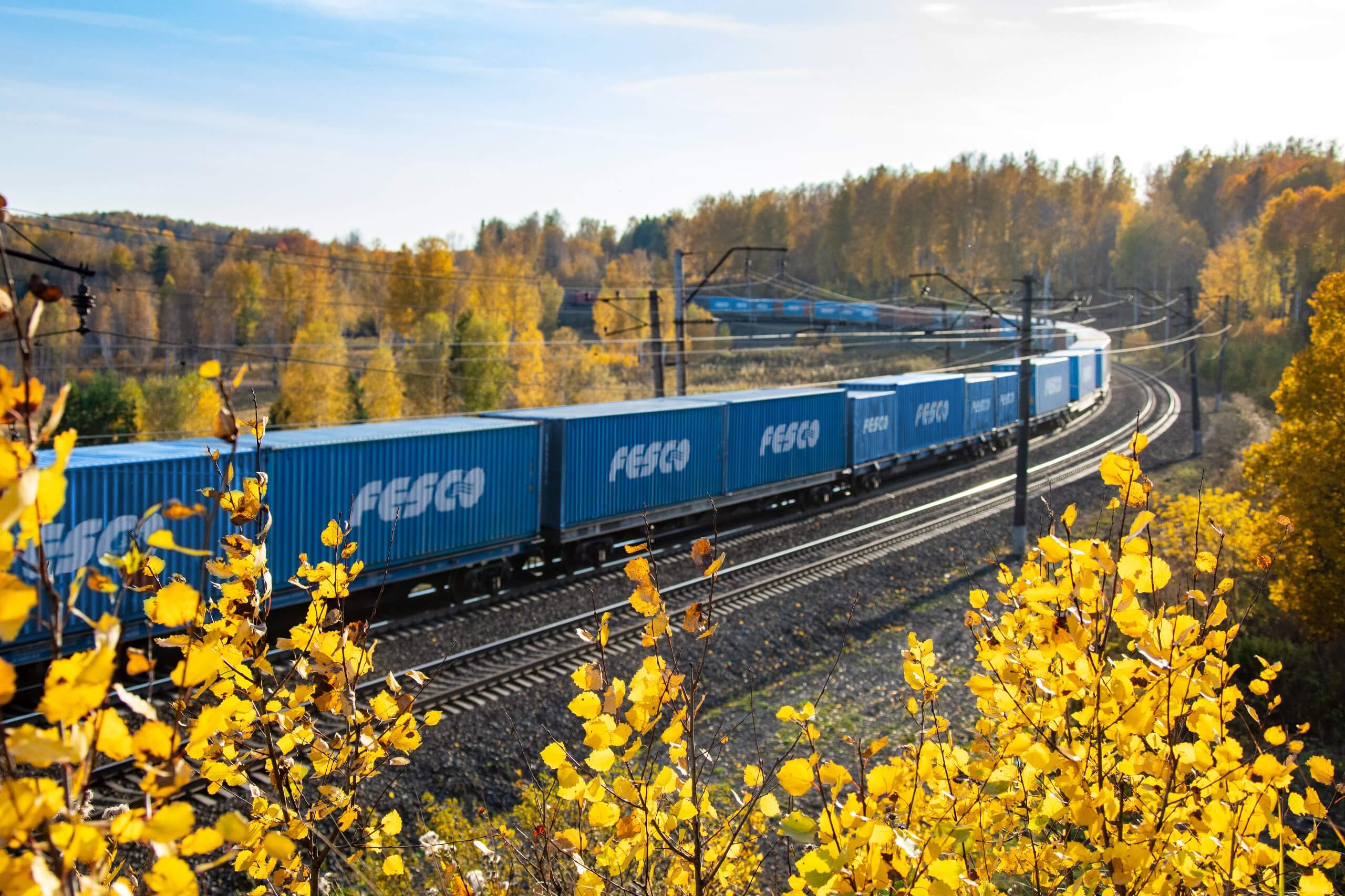
In 2021, FESCO continues to actively develop transit rail and intermodal services from Asia, as well as to expand the network of domestic Russian rail routes.
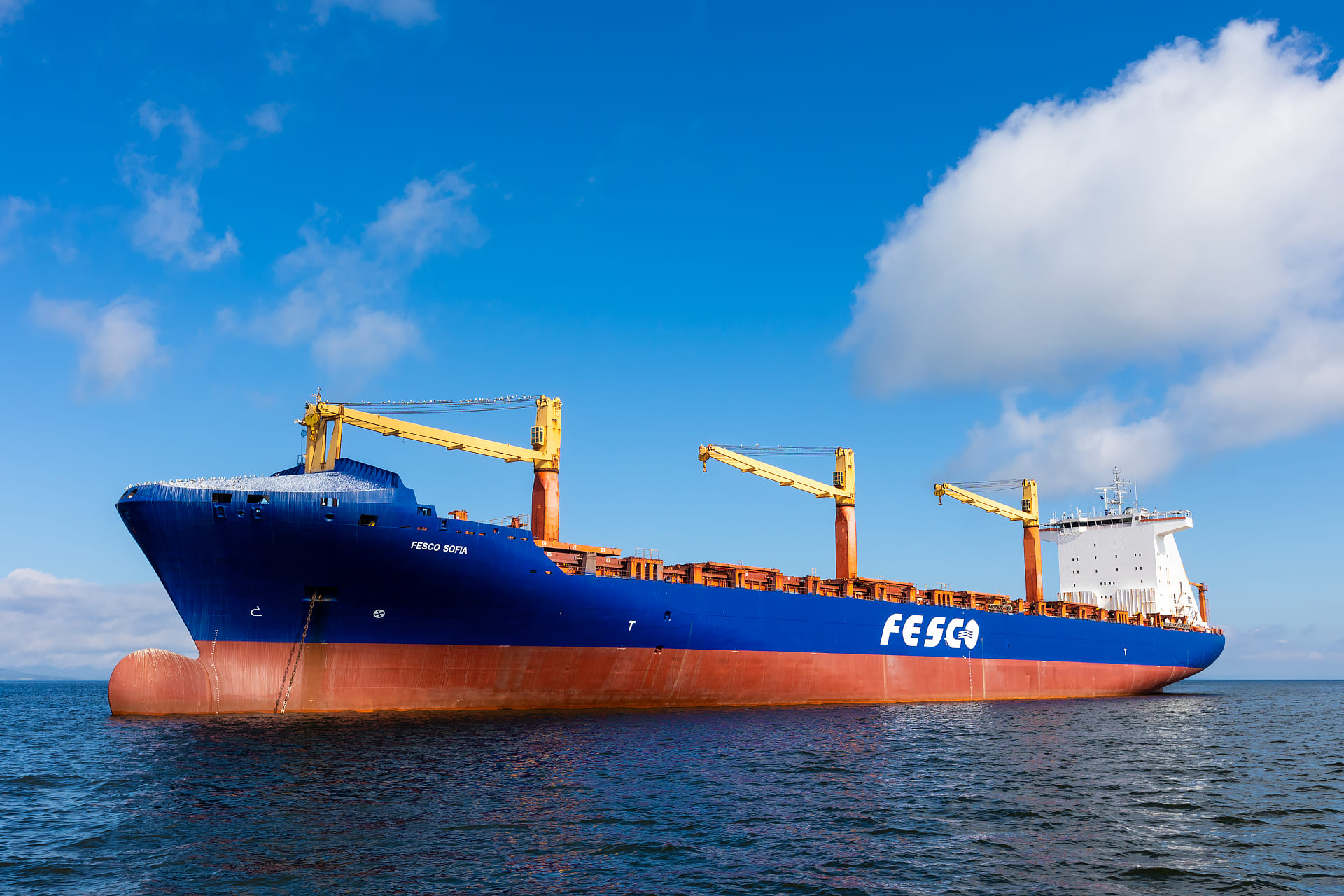
In 2021, the fleet of FESCO was expanded by five vessels - four container ships and one dry cargo ship. The Group also acquired a universal sea terminal in the port of Vladivostok - FESCO Gaydamak. It specializes in grain transshipment and general cargo handling.
As part of development of corporate social responsibility FESCO launched a project to support children's and family reading the goal of which is to instill in children a love for books. The Group republishes popular pre-revolutionary and Soviet children's books, which are donated to educational, medical and social institutions in Primorye and other regions of its presence.
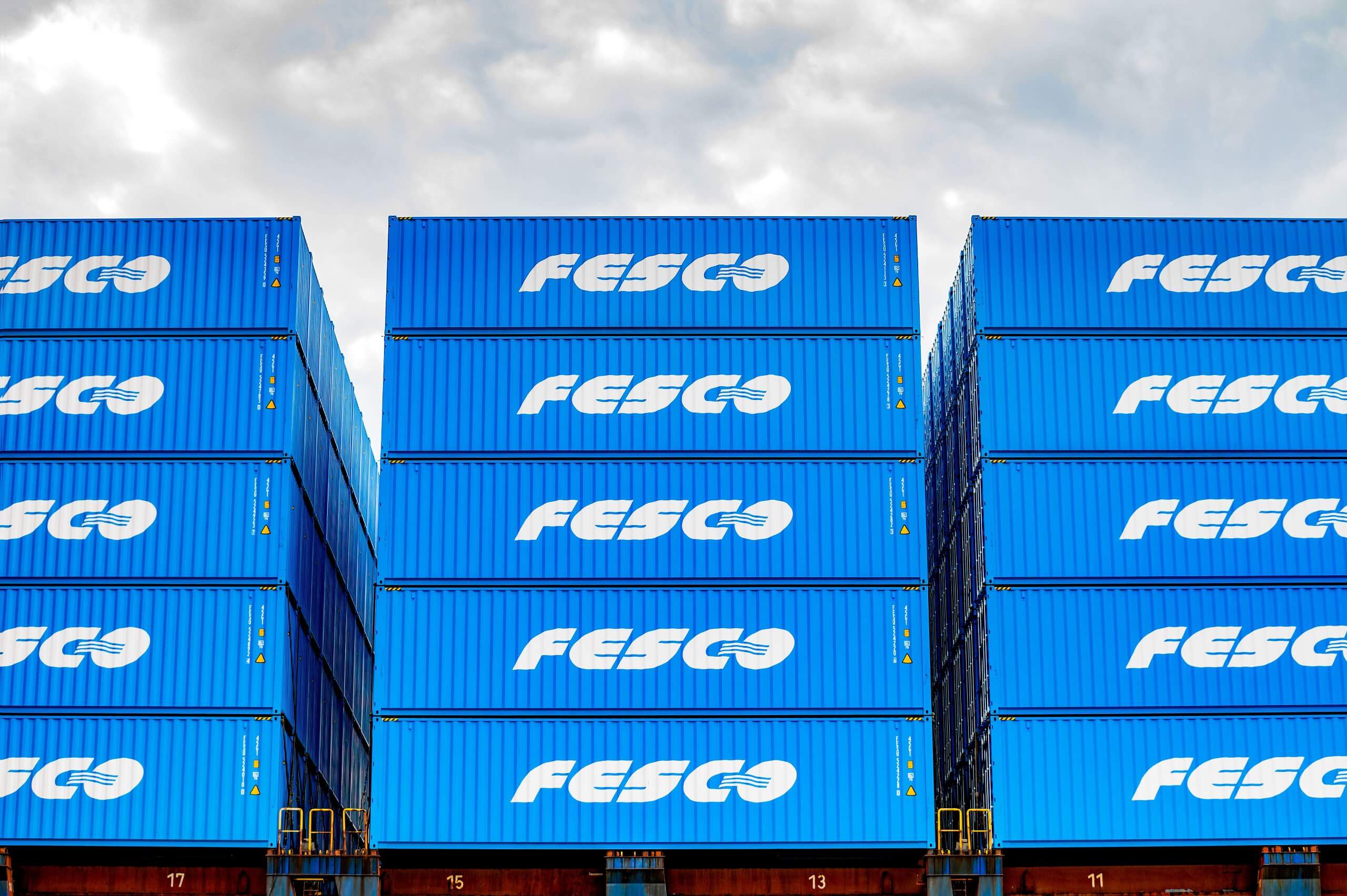
The years 2022-2023 were marked for FESCO by development of new logistics services in those areas where the Group either had never been present or could not operate for many years due to reasons beyond its control. Thus, in April 2022, FESCO Turkey Black Sea (FTBS) marine service was launched, connecting Novorossiysk and Istanbul.
At the end of May, the Group organized a regular sea FESCO VIETNAM DIRECT LINE (FVDL), which is serviced by own fleet of the Group and connects Commercial Port of Vladivostok with the Vietnamese ports of Ho Chi Minh and Haiphong. Due to the demand for this service from both Russian and Vietnamese customers, FESCO added two extra vessels to the line in October 2022 and April 2023 - FVDL is currently served by three container ships of the Group. In addition, FESCO has organized a logistics hub in the port of Ho Chi Minh for the purpose of consolidation of cargo from other countries of Southeast Asia and their further shipment to Vladivostok.
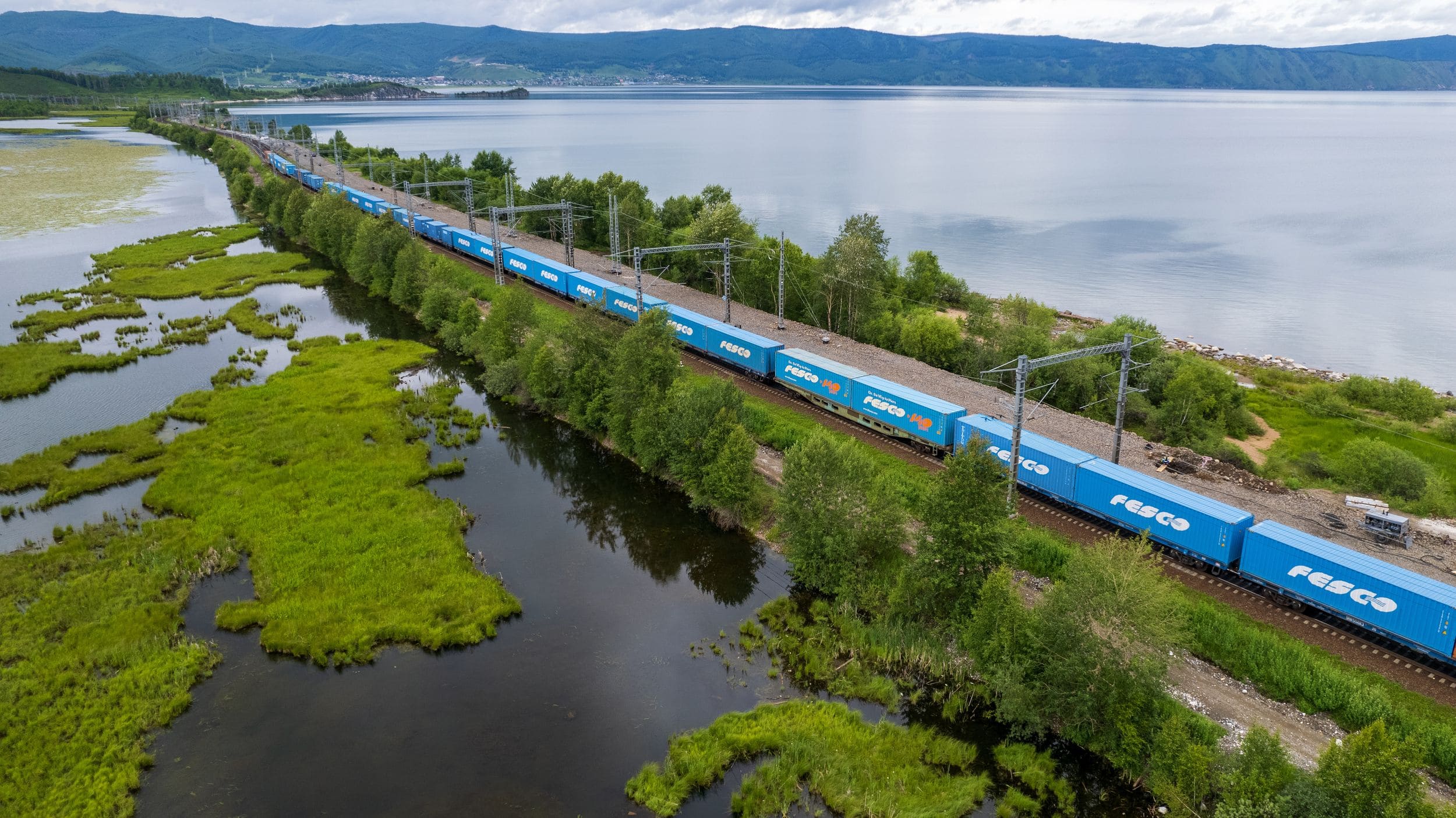
During the same period, FESCO actively expands its network of own rail container services. The Group organizes dispatches of trains from Vladivostok to Samara and Tatarstan, from Moscow to Yekaterinburg, from Irkutsk to Vladivostok and many other destinations.
In addition, in June 2022, FESCO launched a regular train from Vladivostok to Minsk (Republic of Belarus) and in September of the same year, it looped the route and began dispatching container trains in the opposite direction - from Minsk to Vladivostok.
Since the same year, the Group has begun to develop a new line of services in the FESCO Supply Chain structure: FESCO Flexi service has been organized for transportation of bulk cargo in containers using sealed liners (flexitanks), and FESCO Air - for delivery of various goods by charter and regular flights on domestic and international routes.
In October 2022, the Group established a subsidiary in Uzbekistan - FESCO TURAN, its work is focused on operational support of existing container services of the Group and development of rail transportations from Vladivostok and Novorossiysk to countries of Central Asia.
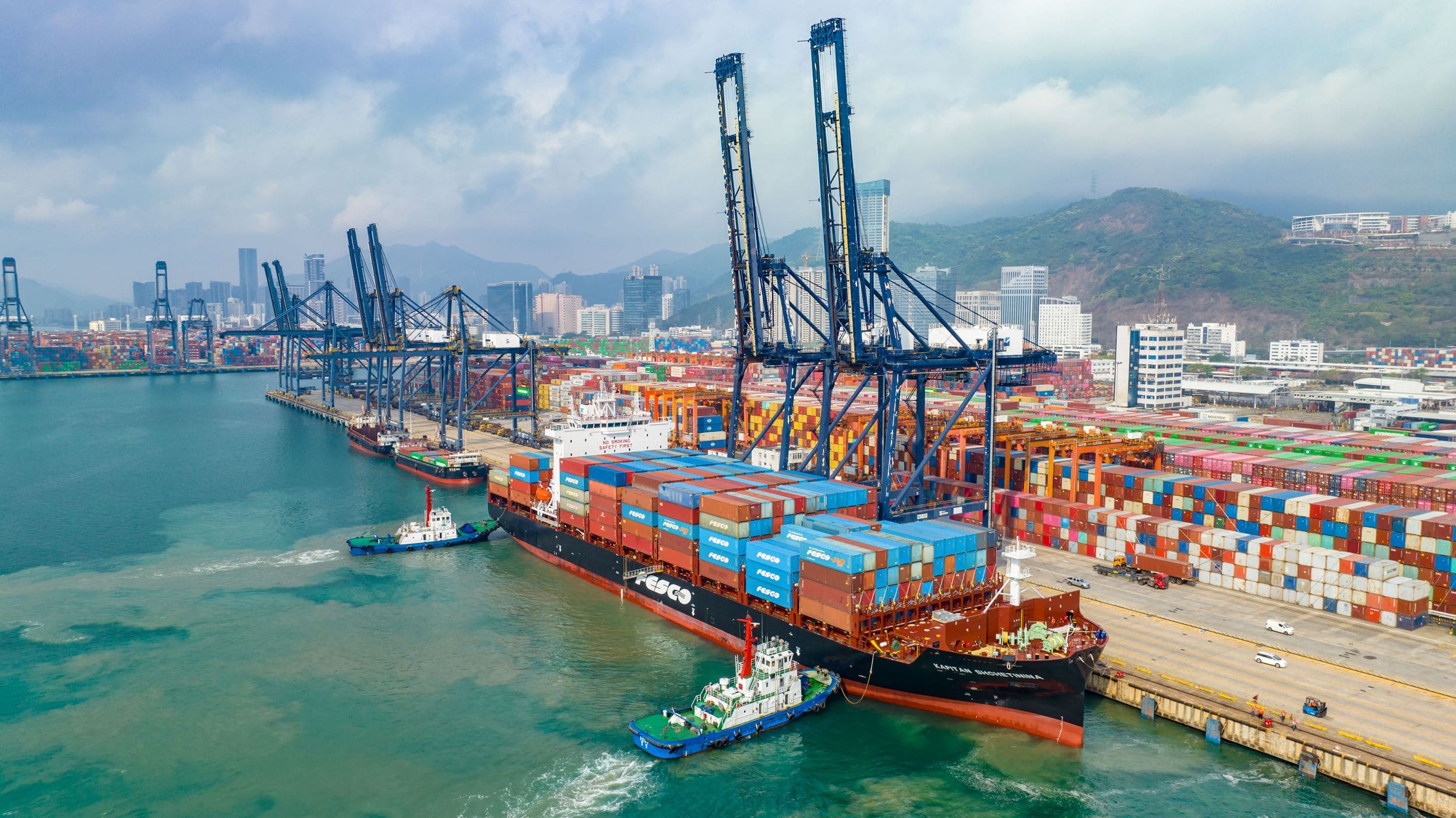
In 2023, FESCO continues its expansion to new markets and destinations. In February, the Group launched its first cabotage line in the Baltic Sea - FESCO Saint-Petersburg Kaliningrad Line (FSKL) which connected Saint Petersburg and the Kaliningrad region. The service is served by own container ship of FESCO which provides residents and businesses of the westernmost region of Russia with all necessary cargo - from food to ready cars and vehicle kits. The Group also integrated FSKL with the FESCO Moscow Baltic Shuttle rail service to transport containers from Moscow to St. Petersburg with the possibility of further dispatch to Kaliningrad.
That same month, the Group announced launch of the sea FESCO Indian Line West (FIL-W) from Indian ports of Nhava Sheva and Mundra to Novorossiysk via the Suez Canal. Already in summer 2023, FESCO increases its capacity by adding a separate vessel, and in December expands its geography by connecting feeder lines with other ports of India as well as with Bangladesh and Pakistan via transshipment in the port of Mundra.
Also in 2023, FESCO was the first among Russian companies to launch a direct sea service based on own assets from ports of China and India to St. Petersburg along the deep sea route (via the Suez Canal) and without calling at European ports - FESCO Baltorient Line (FBOL). Geography of the line covers all main northern and southern ports of China. In June, the Group connected the service by feeder lines with Malaysia, Vietnam and Thailand and in September - with Indonesia and South Korea.
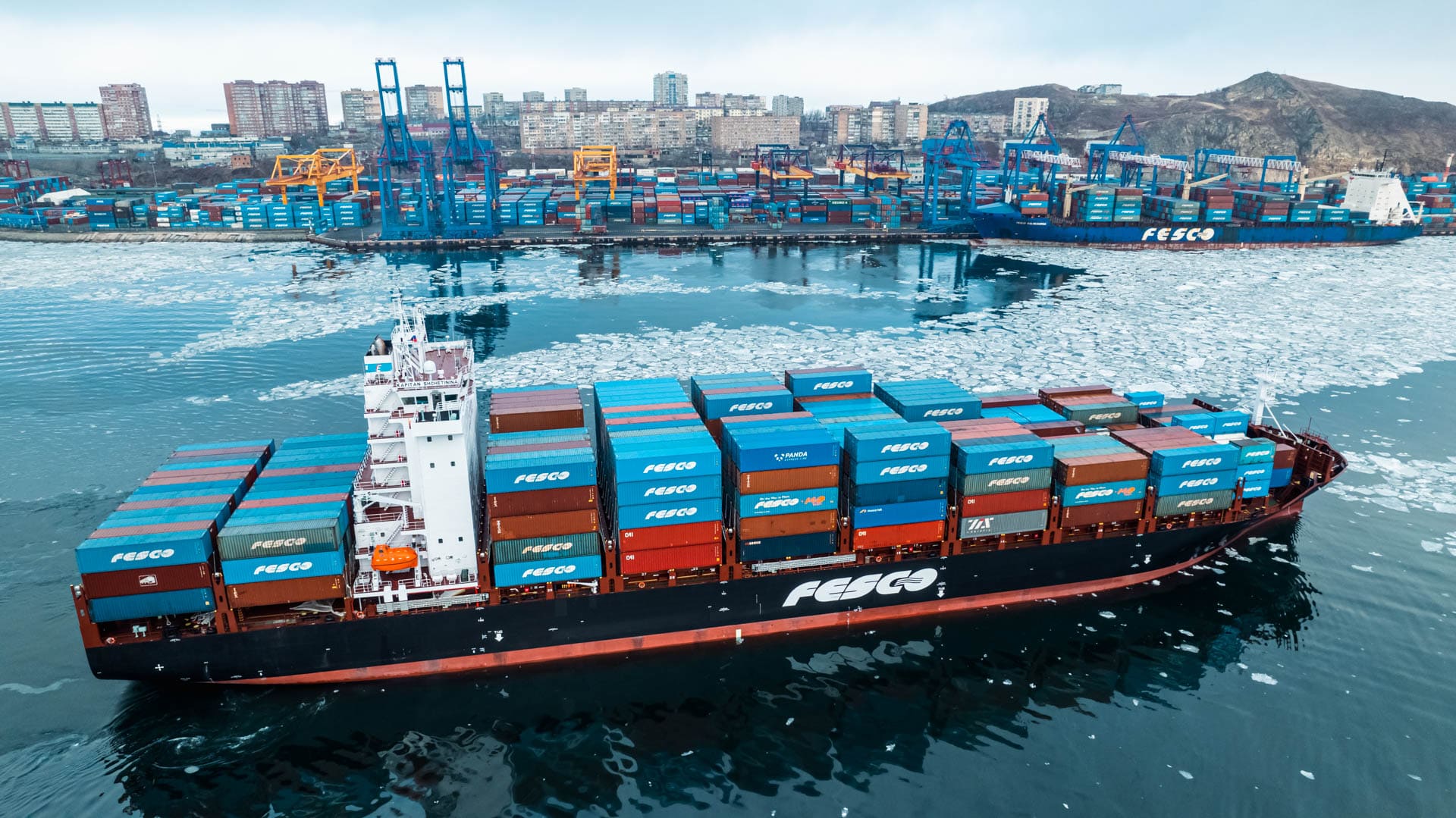
New tasks and volumes required FESCO to significantly expand and update its fleet. To not only purchase ready-made units, but to acquire completely new vessels. Thus, specifically for servicing the FBOL deep sea, the Group ordered a series of six modern container ships with a cargo capacity of 2471 TEU each, named after historical ships and legendary captains of FAR-EASTERN SHIPPING COMPANY PLC., from a shipyard in China. In addition, three vessels from the secondary market also joined the FESCO fleet in 2023.
The Group continued to expand the geography of rail container services, including from Novorossiysk to Moscow, from St. Petersburg to Krasnoyarsk and Yekaterinburg, from Vladivostok to Irkutsk and others.
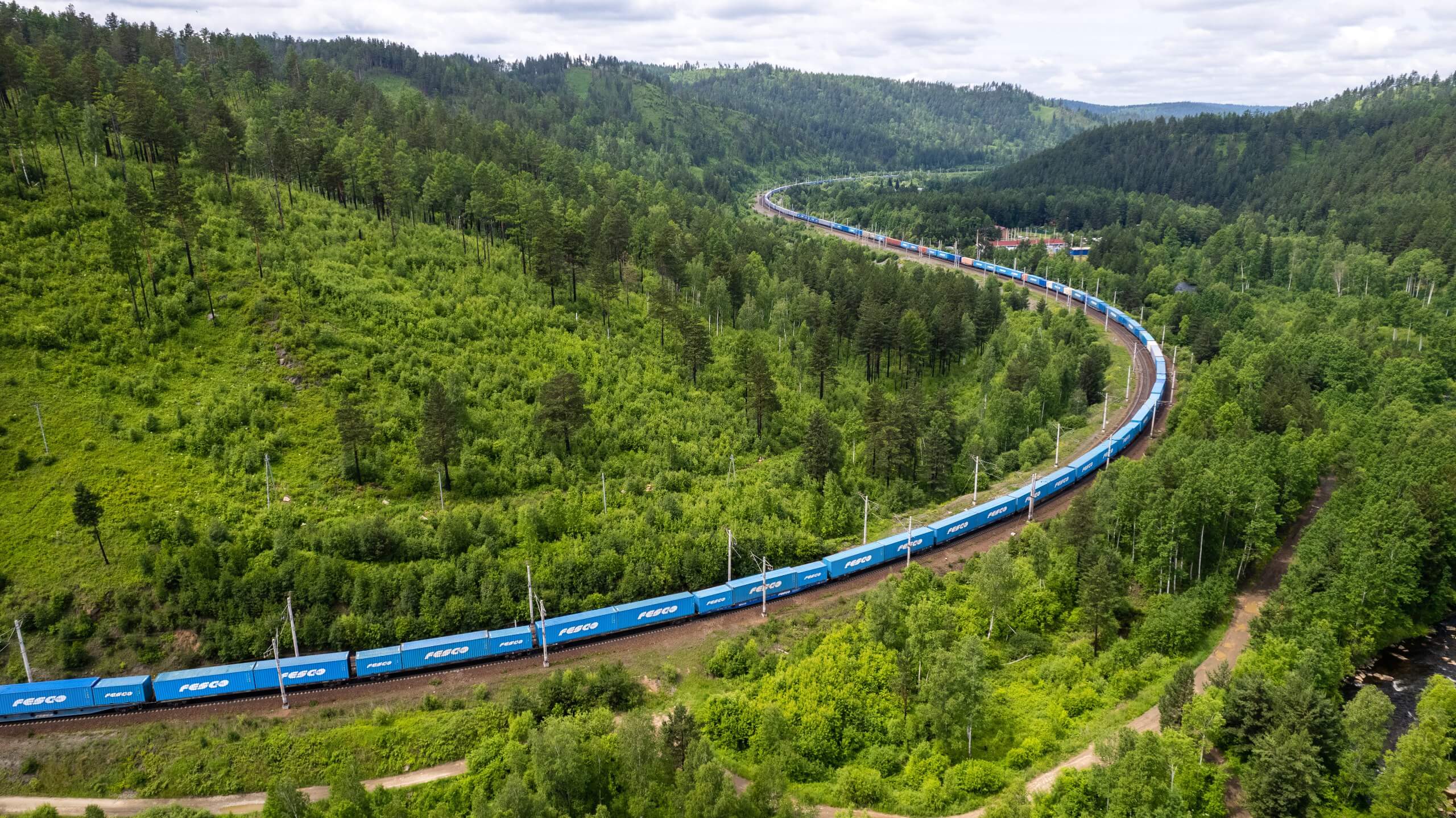
FESCO also established a subsidiary in Minsk to develop import and export rail transportations in the Republic of Belarus and to integrate them with FESCO sea services from St. Petersburg, Vladivostok and Novorossiysk. Another subsidiary was established in the Republic of Turkey with headquarters in Mersin. The company provides a full range of transport and logistics services with a focus on project cargo transportations for energy, petrochemical and gas chemical enterprises under construction in Turkey and countries of Central Asia.
In addition to traditional sea, rail and intermodal services, in 2023 FESCO launched complex supply chain management solutions for specific industries: FESCO Automotive - a logistics product for development of import transportations of automotive products from countries of Asia to Russia and FESCO Agro - integrated logistics solutions for Russian agricultural enterprises that export their products in containers.
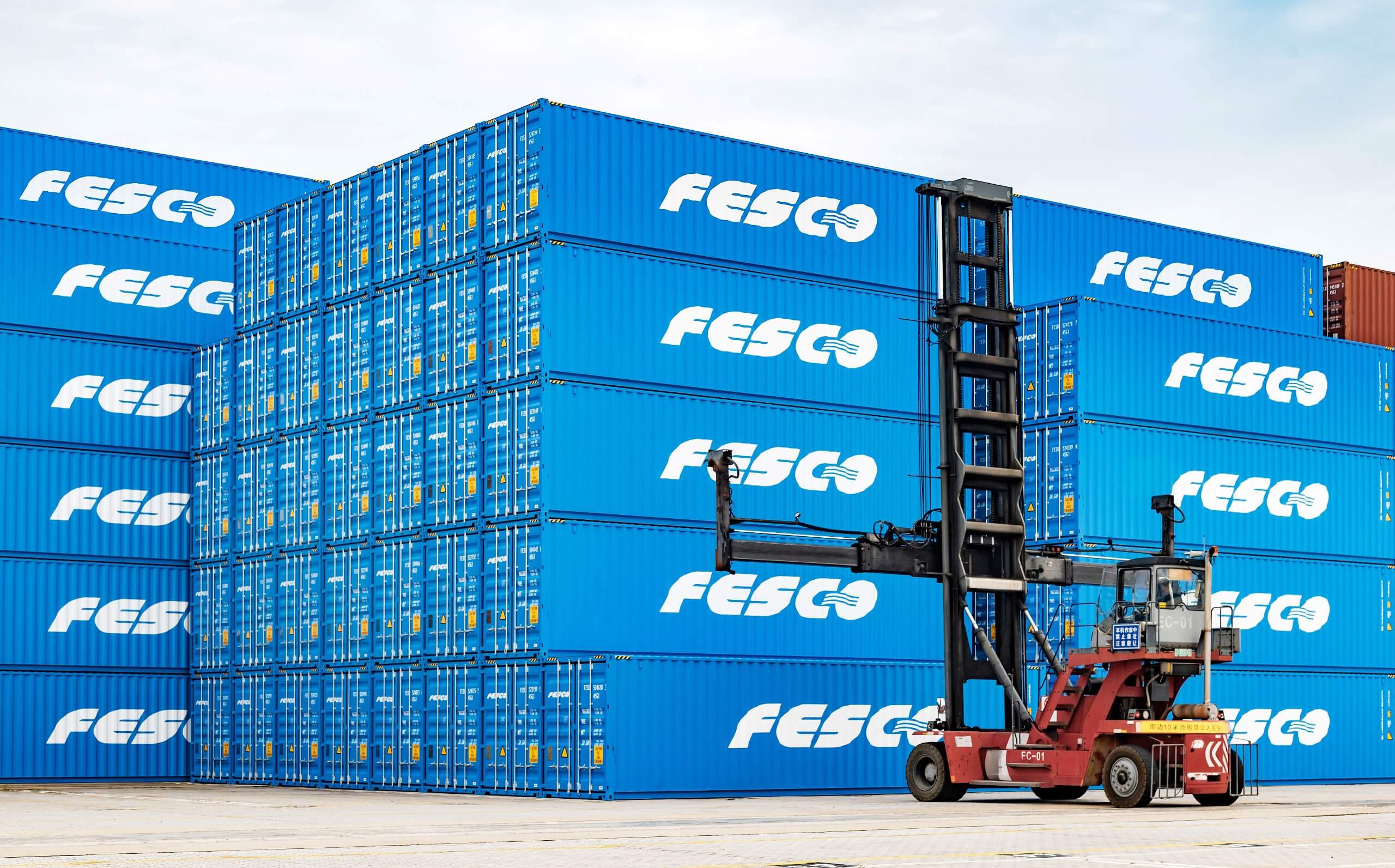
In November 2023, the controlling stake of FAR-EASTERN SHIPPING COMPANY PLC. (the parent company of FESCO Transportation Group) was transferred to State Corporation Rosatom in accordance with Decree of the President of the Russian Federation, which in turn revealed new prospects for further development and new growth points for the Group.
2024 – present
.jpeg)
The year 2024 was a confirmation of commitment of FESCO to the development strategy with an emphasis on replenishment of the fleet, development of port capacities and container fleet. The Group has completed its integration into the control loop of State Corporation Rosatom, at the same time the fleet of the Group has been replenished with three new modern vessels, which, according to the established tradition, have received the names of iconic captains of the Far Eastern Fleet.
Also in 2024, FESCO took the first place in terms of foreign trade shipping to Russia and the 36th in the world ranking among container shipping companies according to Alphaliner agency.
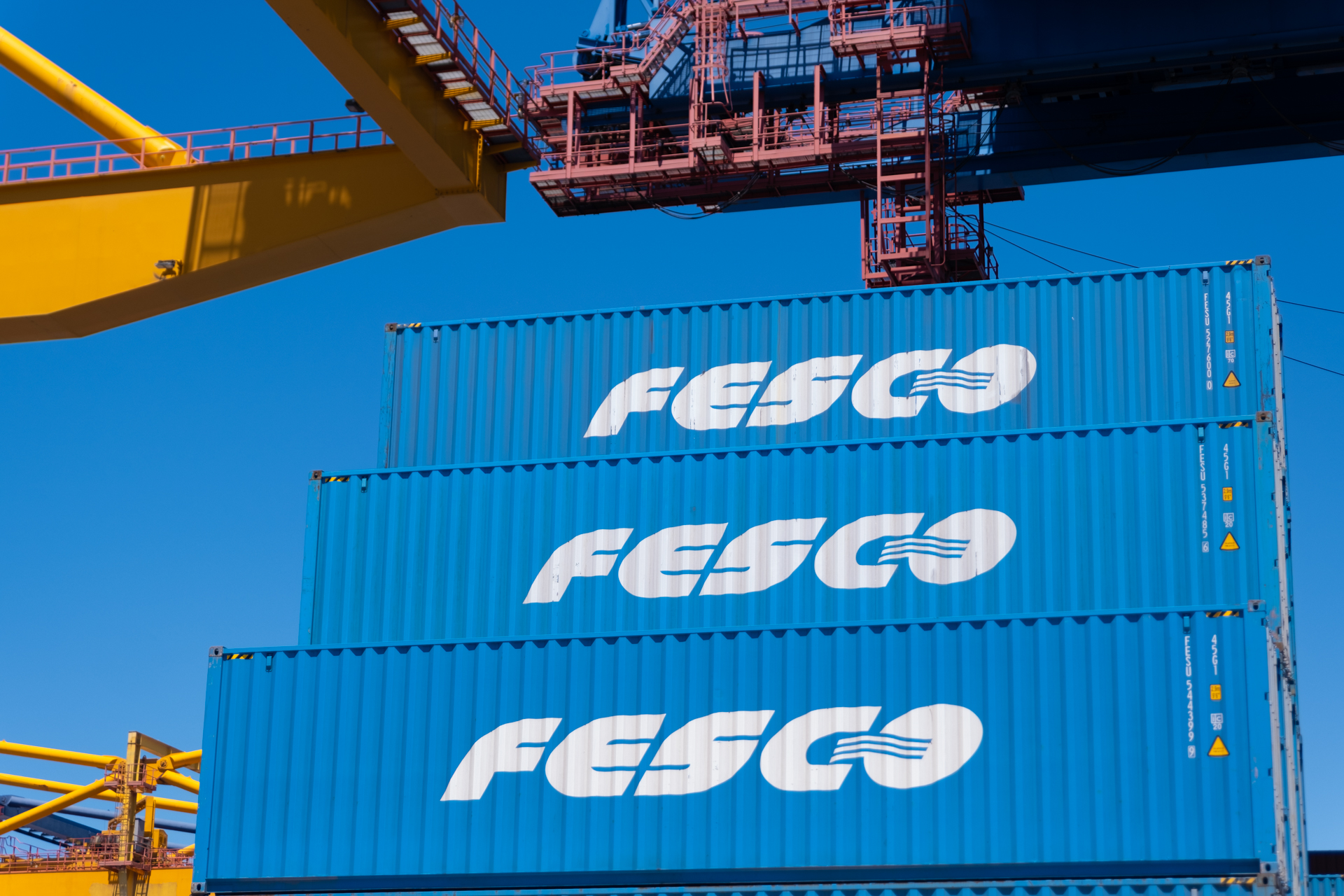
The volume of container fleet under management has reached a record value in the history of the Group. In two years, it has increased by more than 55% and amounted to over 200 000 TEU. In addition, the number of fitting platforms operated by FESCO reached 15 000 units in 2024, which is also an absolute record for the Group.
FESCO continued to move actively towards strengthening the transport sovereignty of our country, expanding its range of services both in the domestic market and in the export sector in the interests of domestic entrepreneurs. An important step was the launch of a new service for delivery of meat products to China. This made it possible to organize supply of Russian-made pork after almost 15 years of restrictions in China.
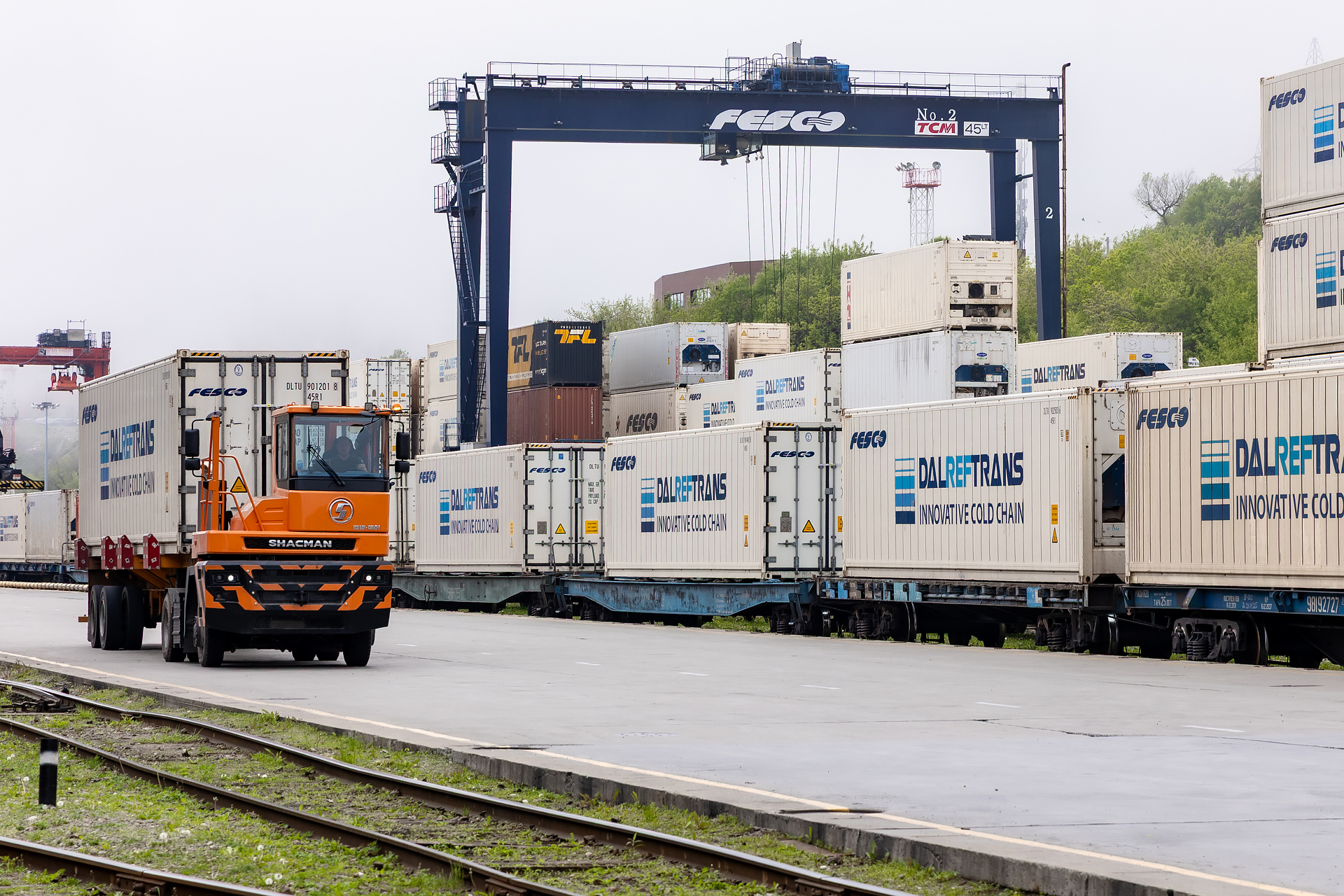
Some of the logistics products of the Group launched in 2024 have appeared for the first time in recent decades. Thus, the regular line FESCO Intra Asia Service (FIAS) directly connected the ports of Vietnam, Malaysia and Thailand and became the first sea service of the Group in almost twenty years that needs no calling at Russian ports. Thus, FESCO entered the market where global carriers operate and began to compete with them on equal terms.
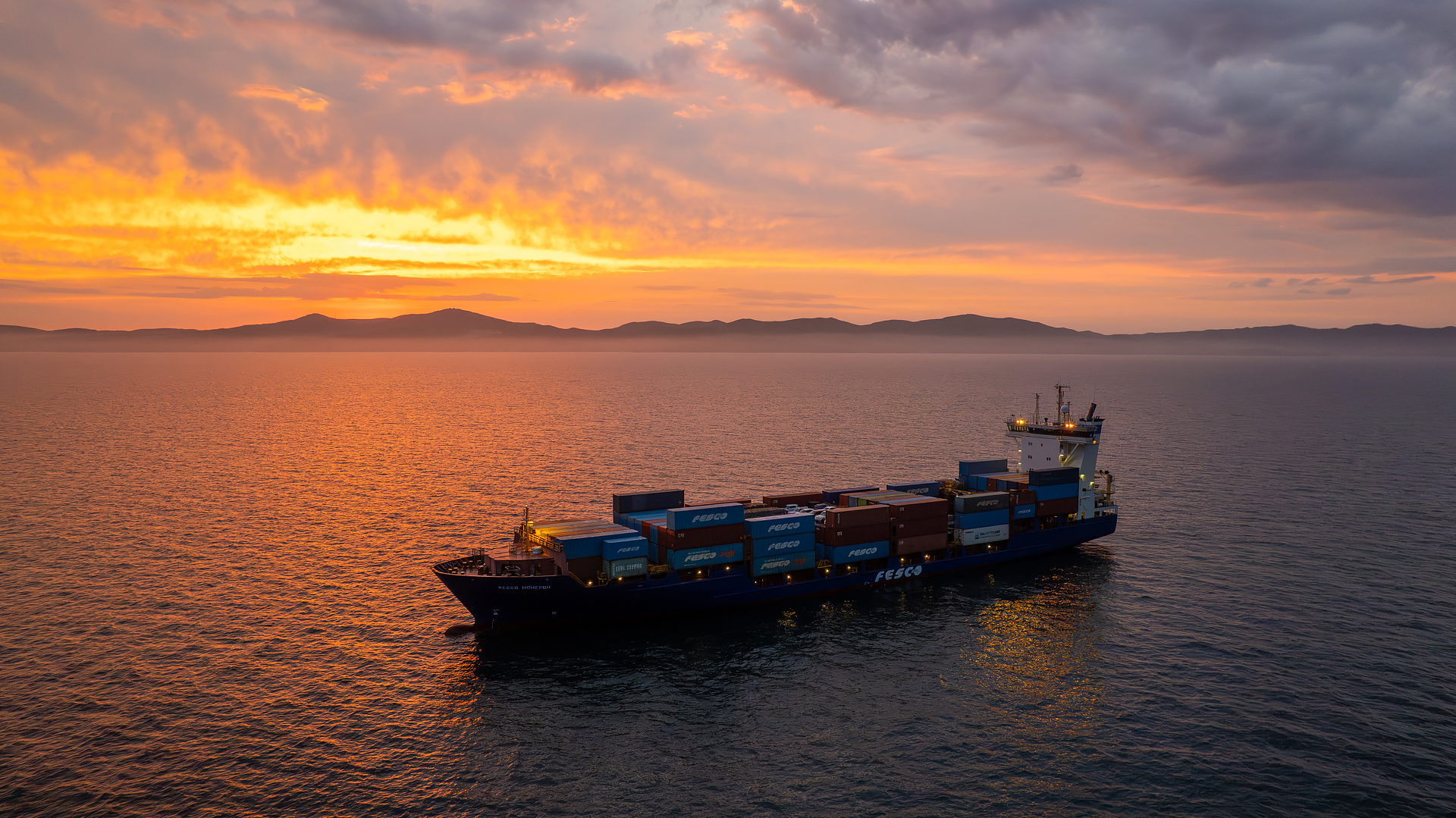
The new FESCO routes connected Russian economic centers with the African continent and countries of the Persian Gulf as well as new industrial regions of China, including via land border crossings. The Group launched a direct sea service from the ports of China to Novorossiysk – FESCO Black Sea Service (FBSS), significantly expanded the geography and increased the capacity of FESCO Indian Line West (FIL-W) which demonstrated an almost sevenfold increase by the end of the year.
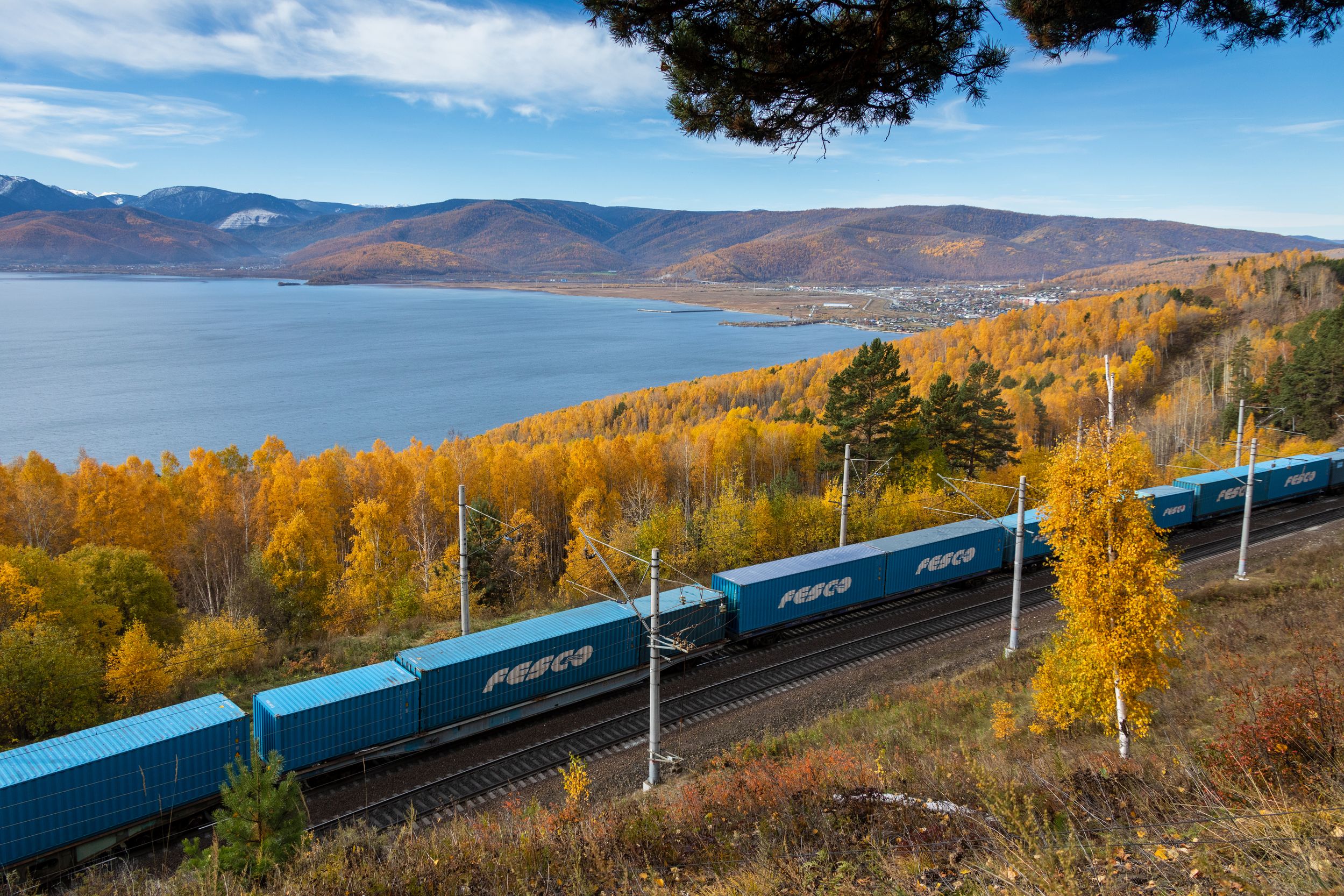
In the Chinese direction, FESCO has almost doubled dispatches of imported container trains via land border crossings to 60 trains per month.
In order to develop container transportations in different regions and countries and to control all stages of delivery FESCO continued to expand its network of representative offices. Thus, an office was established in Kaliningrad, the westernmost region of Russia, and at the end of the year a subsidiary of the Group with offices in Ho Chi Minh City and Haiphong was established in Vietnam.
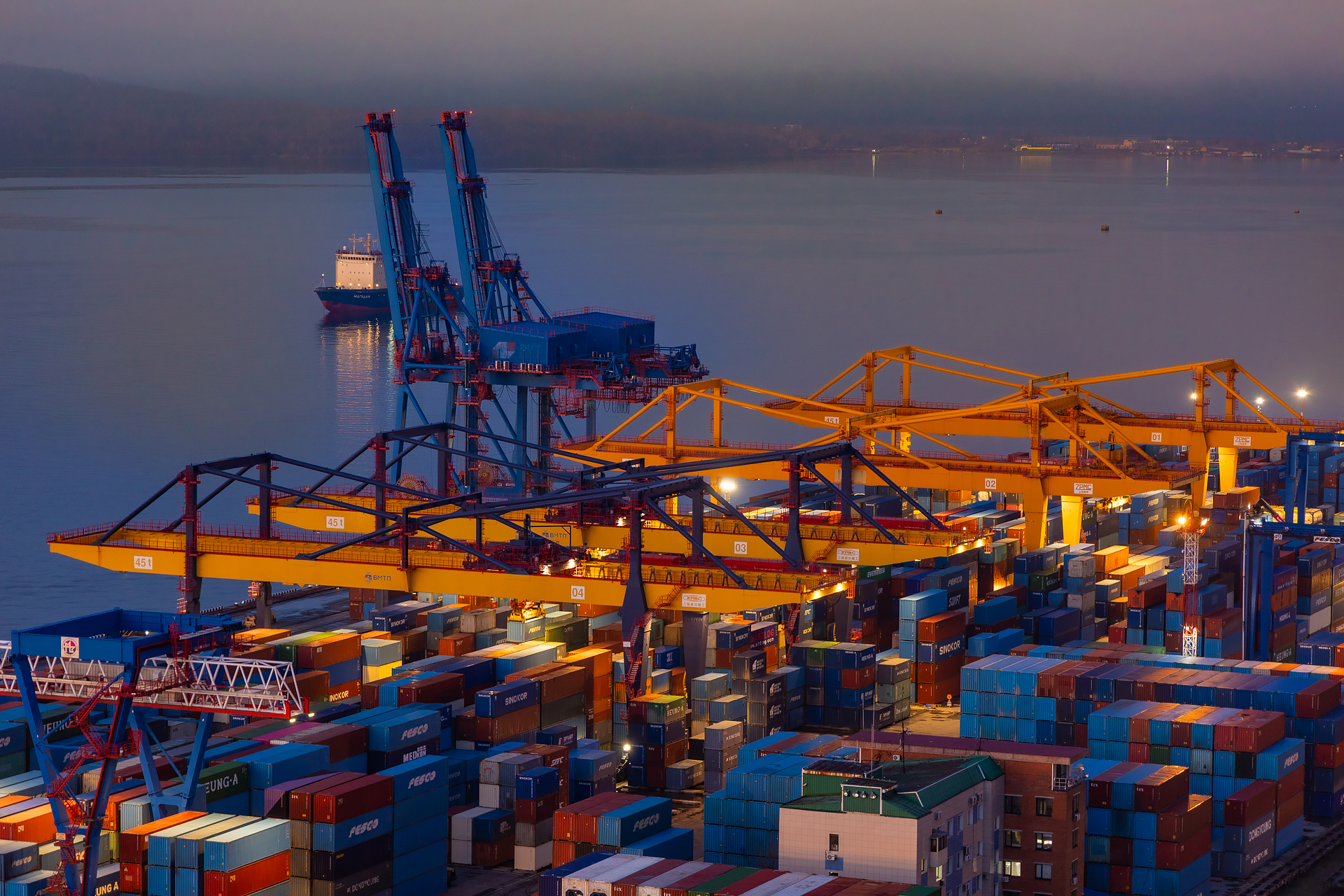
Commercial Port of Vladivostok has updated its own record having handled 878.7 thousand TEU in 2024 – almost 20 thousand more than a year earlier, retaining the first place in container throughput in the Russian Federation.
